from Most Popular News from healthcareitnews.com https://ift.tt/2Xgiykd
via IFTTT
Medscape's reader poll also found that few respondents think there will be a readily available vaccine by the end of 2020, but most think one will come by the end of 2021.
If you’re thinking that the best bet for travel right now is by road, you’re not alone. Though total trip numbers are down, AAA predicts that 97 percent of summer travel in 2020 will be by vehicle. The next step, in terms of social-distancing measures to limit the spread of the novel coronavirus: traveling self-contained.
What is self-contained travel? The technical definition for many campgrounds and public lands usually includes language about toilet systems and permanently installed wastewater holding tanks. In other words, an RV. Many road-trippers have taken note. Sales of RVs have been soaring, especially among first-time owners, according to Reuters. If a self-contained unit is required for a particular campground, rolling up in your compact won’t cut it. But from a broader practical standpoint, self-contained travel means carrying everything you need—all your food, water, and lodging—within your set of wheels.
Even without an RV, if you have a van, truck, or roomy car fueled and provisioned, you can easily find the rest of the equipment needed for better self-sufficiency. Every vehicle situation provides its own set of needs, especially when it comes to sleeping accommodations. No matter your mode of choice, though, certain road-trip gear essentials can keep your next outing self-contained, steering clear of crowded gathering places for days at a time.
Stocking up on food and beverages, including the finer things in life—blocks of cheese and cold beer—is clutch to maintaining your distance from highly visited places, like grocery stores and bars, while trying to maintain your self-contained status. You can only pack as many perishables as your cooler can keep, so it’s best to invest in something that can hold it’s cold while taking up space. The Pelican 50 Quart Elite provides a durable cooler with long ice retention, and 1.5 cubic feet of storage volume (38 cans). To avoid the lake of floating debris that bags of ice inevitably provide, consider using a block of dry ice, which is colder, lasts longer, and just dissipates in a gaseous form. Even if you aren’t keeping perishables cold, your cooler acts as a sturdy food pantry that goes through less temperature fluctuation than the rest of your vehicle, thanks to its insulating qualities.
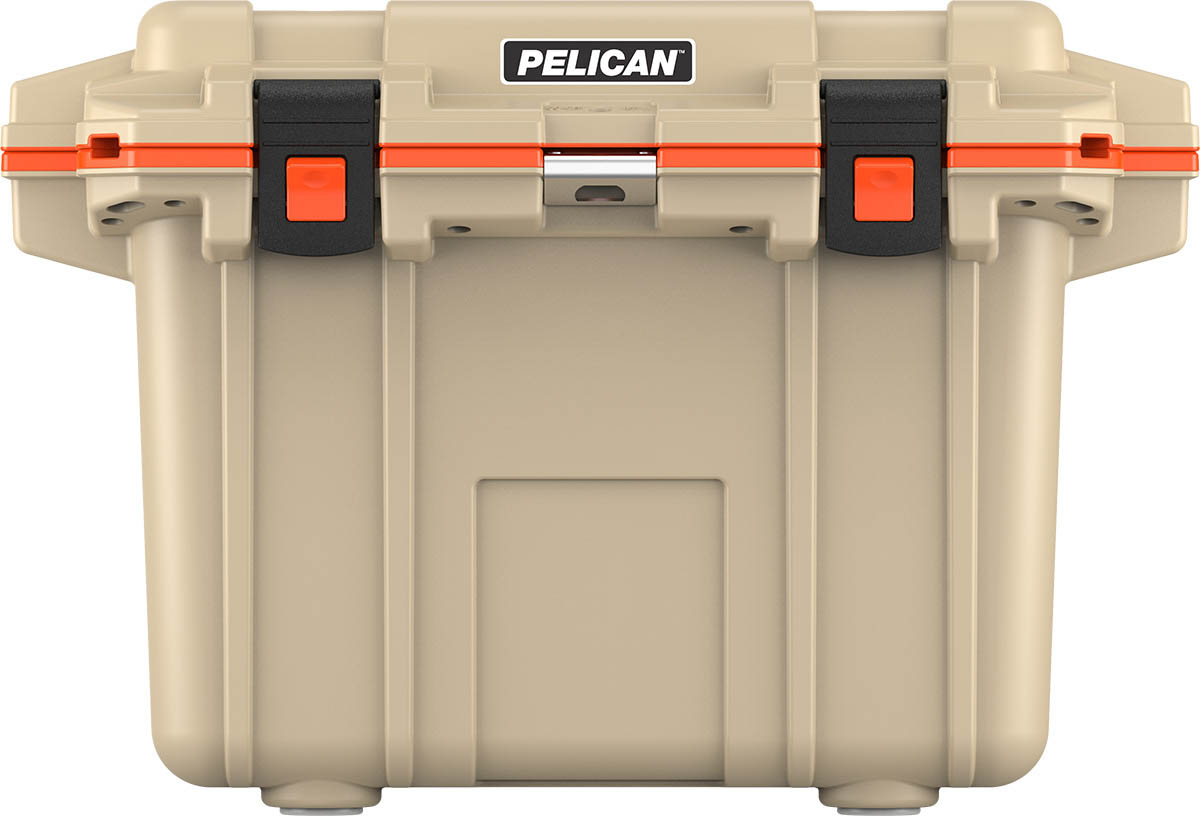
Eating on the road or at camp doesn’t have to mean relegating yourself to peanut butter sandwiches or freeze-dried meals. A two-burner propane stove provides strong flames on a solid platform, all in a relatively packable form. The GSI Selkirk 540 features twin 10,000-Btu burners with capacity for two 10-inch pots, and a push-button ignition. This means you can simmer a sauce on one burner, while boiling noodles or sautéing vegetables on the other. (Not to dismiss the peanut butter; it’s still a staple travel ingredient that fits any meal.)
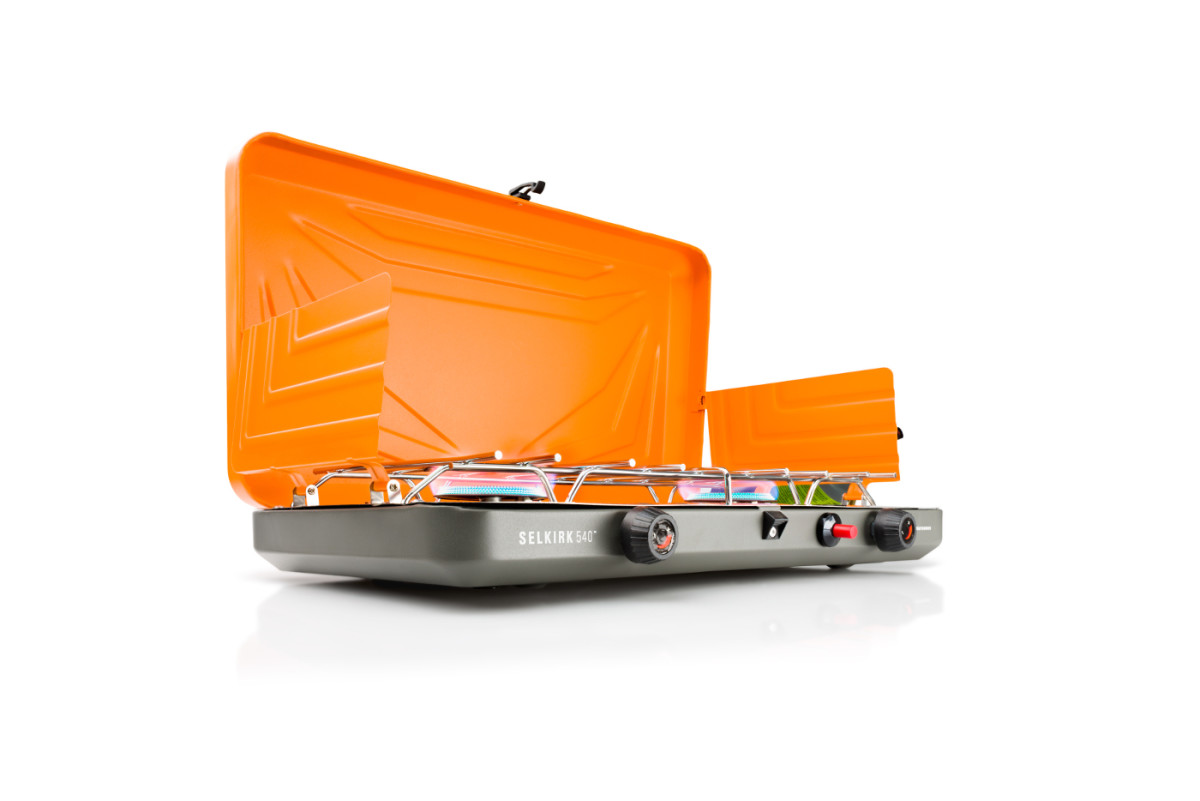
Refillable propane tanks have a higher capacity than one-pound, single-use canisters, so you won’t have to guess whether you’ll be running out of fuel and swapping tanks mid-boil. The Ignik Gas Growler Deluxe is a 5-pound tank that combines long running capacity with a friendly geometry for packing in your car. It includes a hose for a direct hookup to your stove, and a protective carrying case for storage.
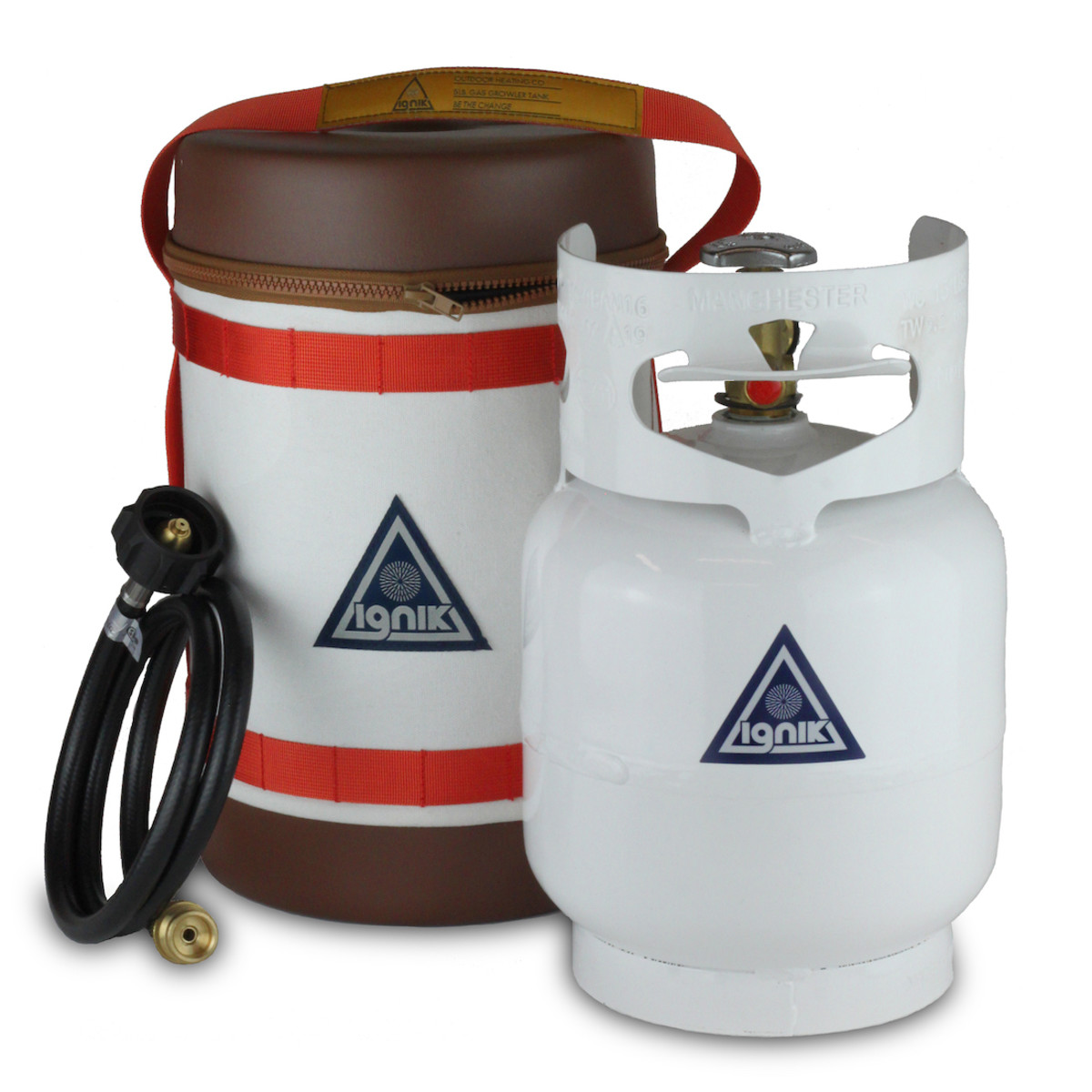
In order to avoid the urge to sit down at a restaurant or just order takeout, it’s best to make sure your kitchen set is capable of whipping up meals fit for a foodie, whether at camp or pulling off at a rest area for lunch. The Destination Kitchen Set from GSI has 24 pieces including utensils, a utility knife, cutting board, and even a cheese grater. Combine it with GSI’s Glacier Base Camp pots and pans and your kitchen is prepped.
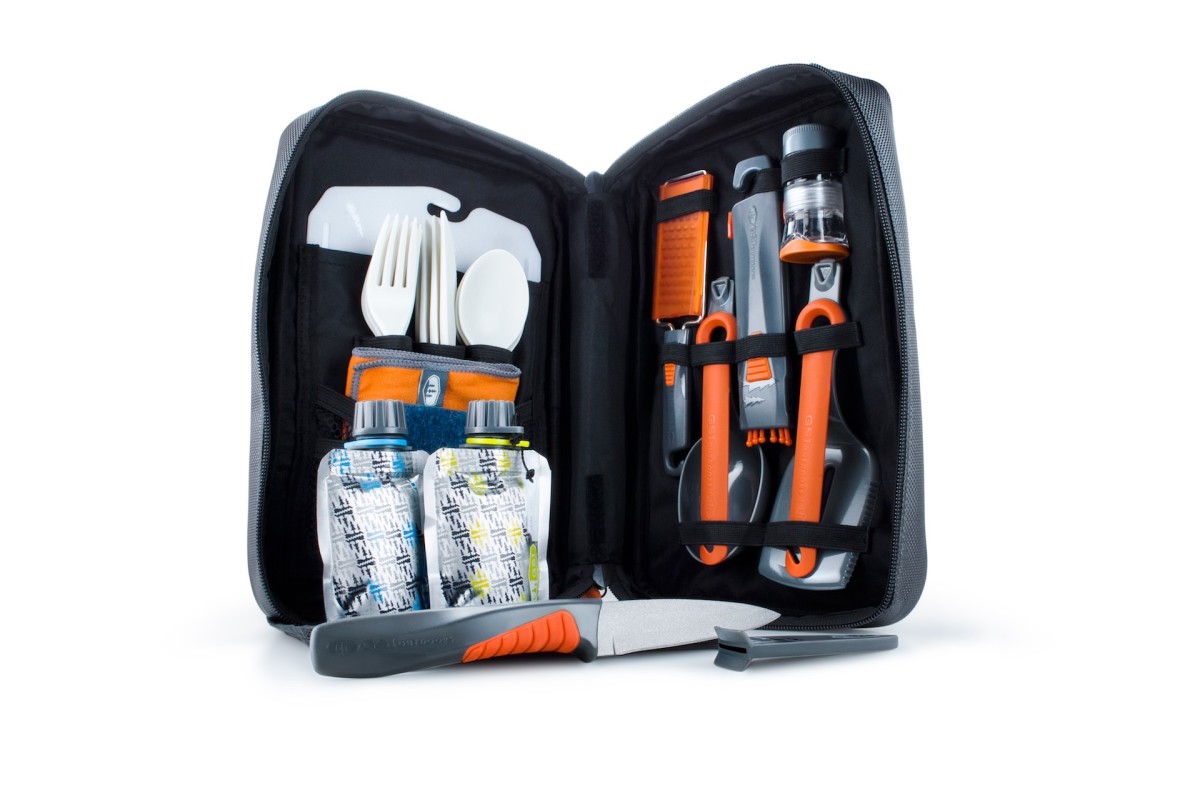
Water Jug
Water is always a priority. Carry a minimum of five gallons to give you a few days before your next refill. Many parks and rest areas have potable water faucets. Supermarkets also have water stations outside that only cost a few dollars. Scepter’s 5-gallon jug is a go-to solution. You’ll notice the X indented on one side of the jug, and protruding on the other. This allows you to nest multiple Scepter containers to increase your capacity on the road.
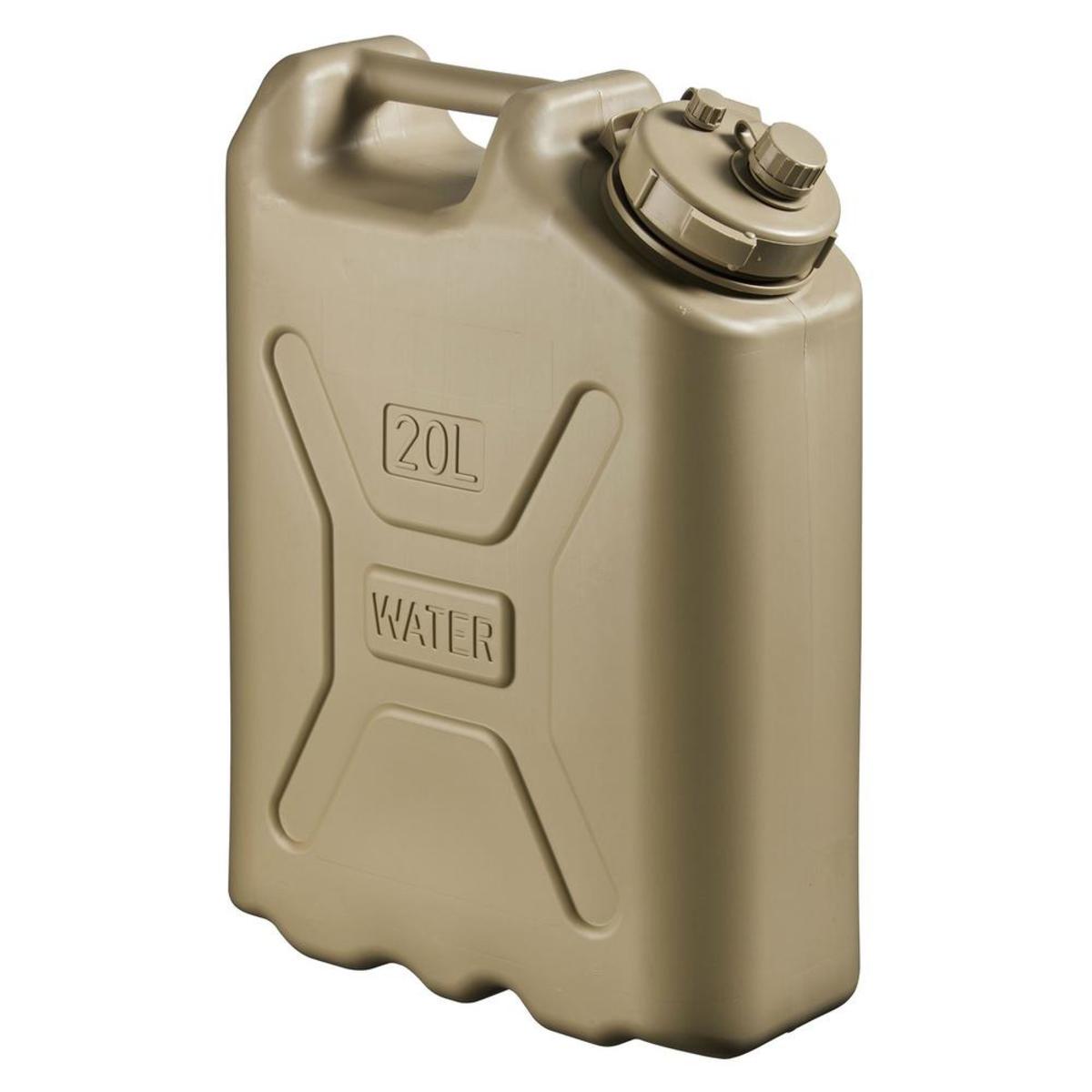
If you have access to a clean freshwater source, a filtration system means you’ll have all the water you need while at camp. The GravityWorks 4.0L by Platypus is reliable and easy to use. The gravity-style filter provides a gallon of potable water on demand without the time and labor spent pumping at the stream.
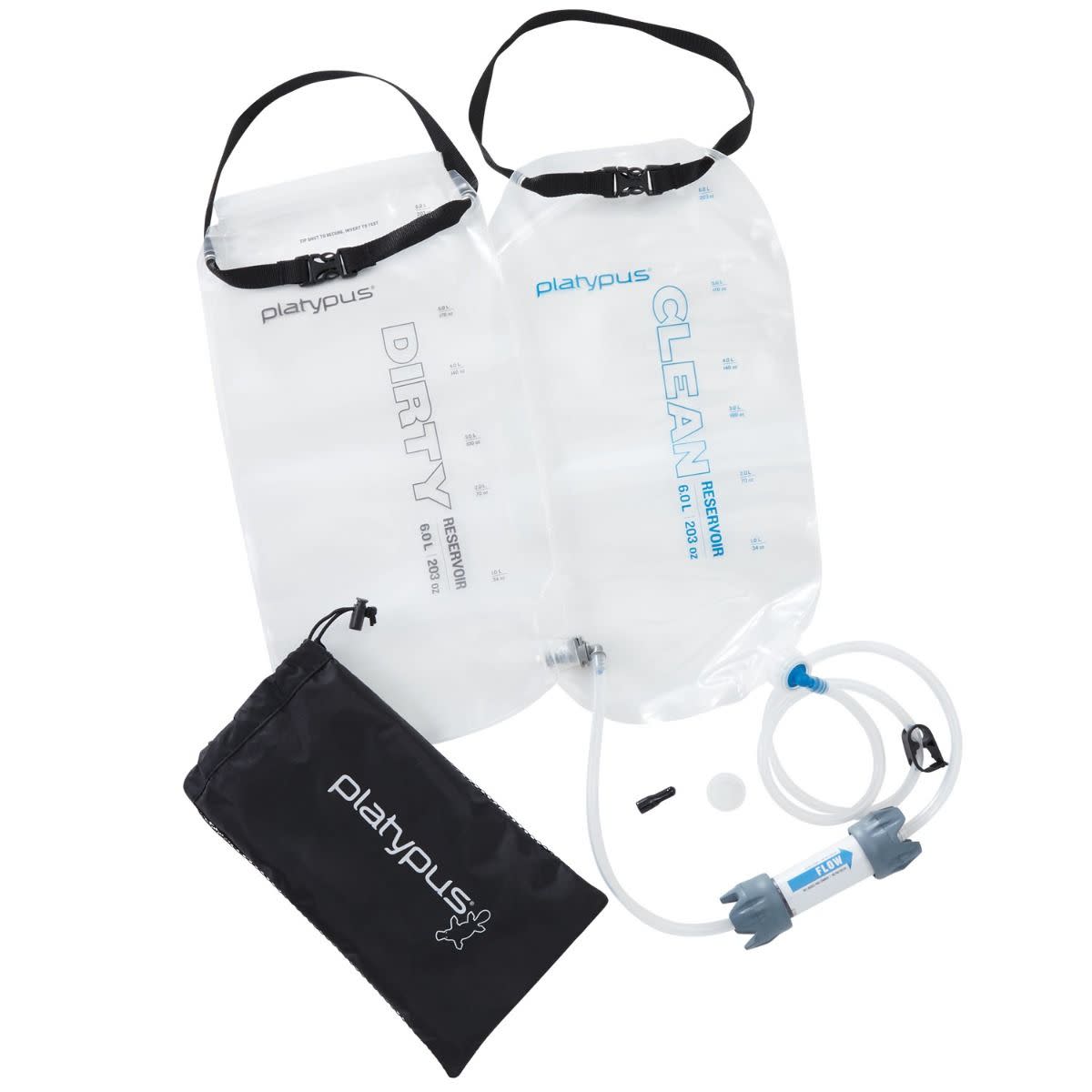
The ability to clean yourself is clutch when it comes to staying self-contained. A solar shower like Nemo Equipment’s Helio is a pressurized solution that feels closer to the hot shower at home than a painfully cold bucket of river water—take your pick. Don’t forget: When it comes to gray water from showers or dishes, use a biodegradable soap like Dr. Bronner’s Pure Castile Soap, and follow best outdoor practices for the area you are traveling (Leave No Trace is a great resource beyond any additional local regulations).

The five-gallon bucket is one of those items you doubt you need to pack, but inevitably use for everything. It is a stepladder, a side table, storage, and wash basin for dishes, to name a few. You can hit your favorite hardware store and sport their brand for less than $10, or pick up something more indestructible like the LoadOut bucket by Yeti.
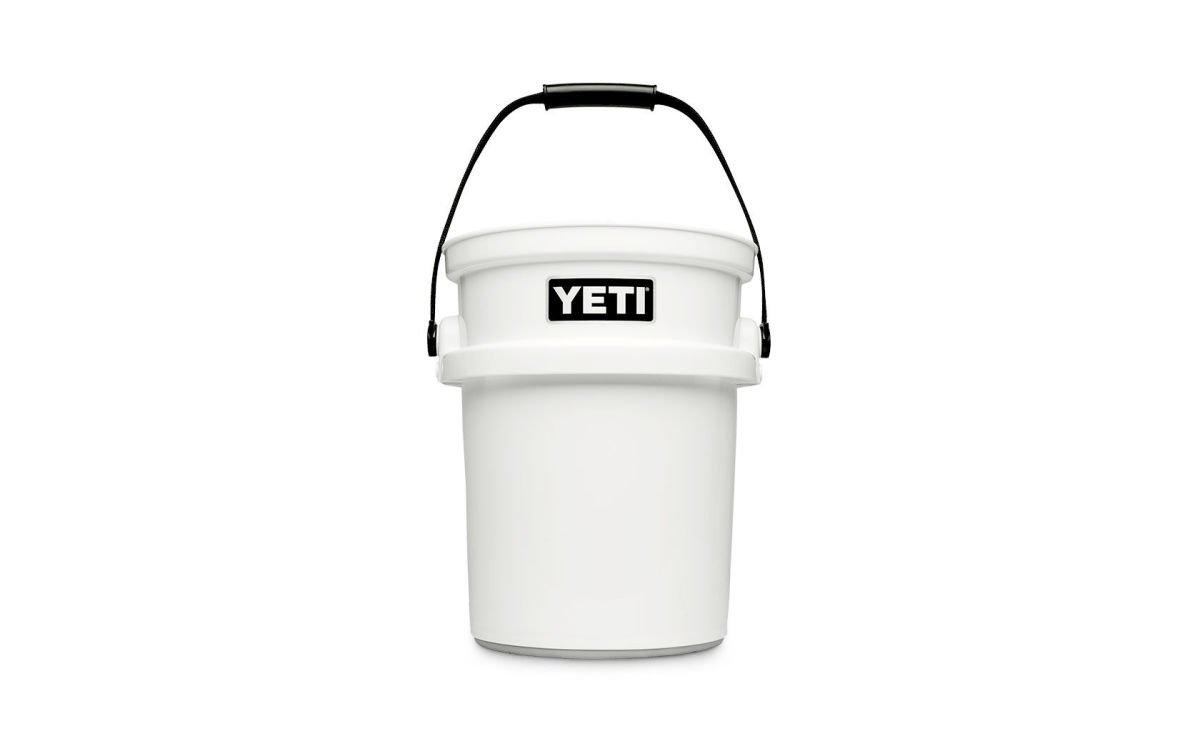
Our smartphones and other electronic devices are, for better or worse, part of our daily gear essentials. Best to keep them charged without constantly pulling from your vehicle battery. Goal Zero’s Yeti 200x Power Station scales in at five pounds, and under a foot in length. It provides 187 watt-hours of power from a full charge, which Goal Zero rates at approximately 20 recharges of your smartphone. To charge the power station itself, the Yeti 200x can be paired with a Goal Zero solar panel such as the Nomad 20. It can also be recharged from a wall outlet or from your vehicle’s power socket while you’re on the move.
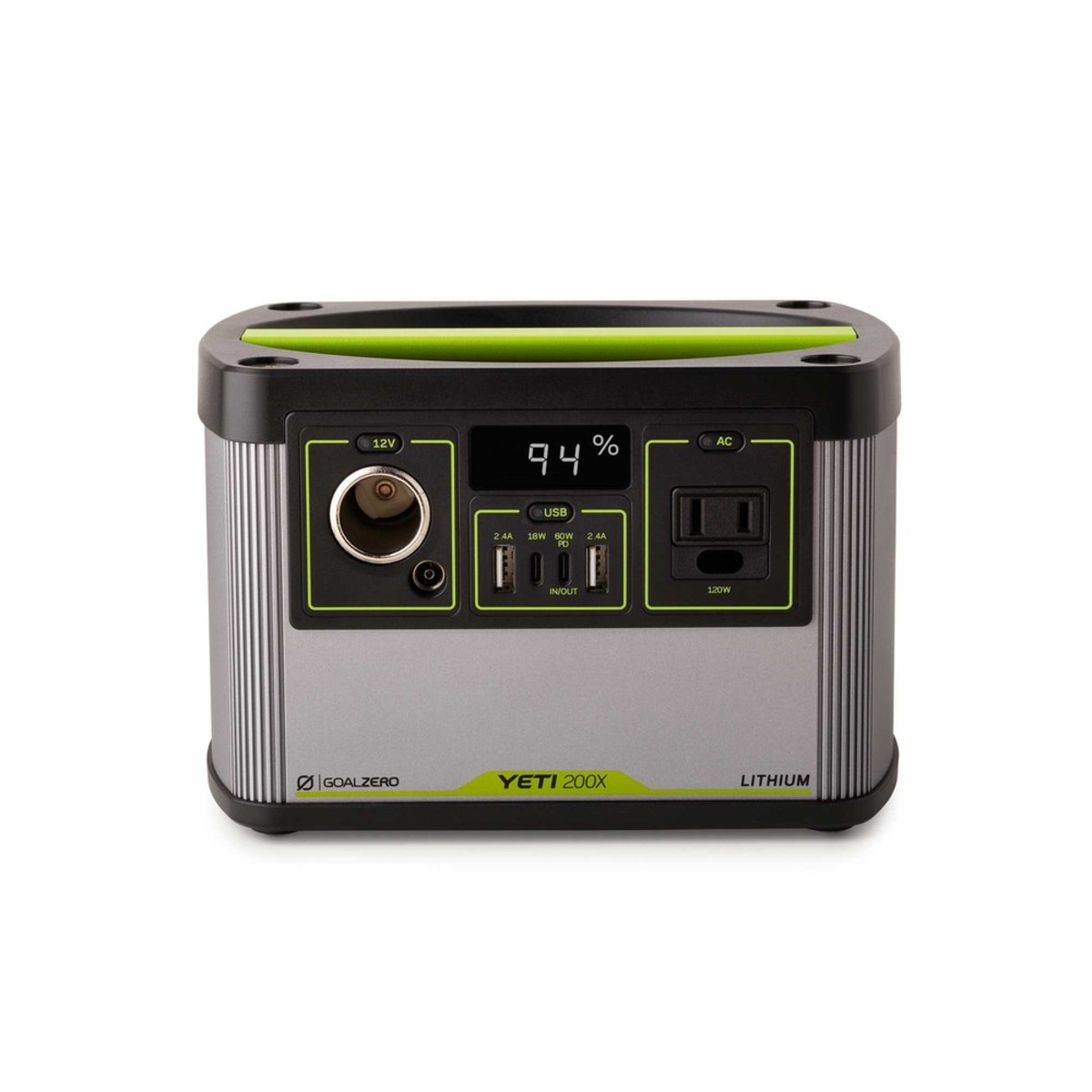
Carrying a first aid kit should go without saying. You should have the supplies to take care of small incidents on your own, and also what you need to treat more serious accidents until you can reach medical care. The Mountain Backpacker Kit from Adventure Medical Kits provides enough care supplies to treat one to two individuals for up to four days.

Things break. If you want to travel self-contained you should have a set of tools to make basic repairs on your vehicle, camping gear, bikes, boats or anything else you are carrying. Craftsman’s 102-piece Mixed Tool Set is a good start for the basics: hammer, screwdrivers, wrenches, sockets and pliers.
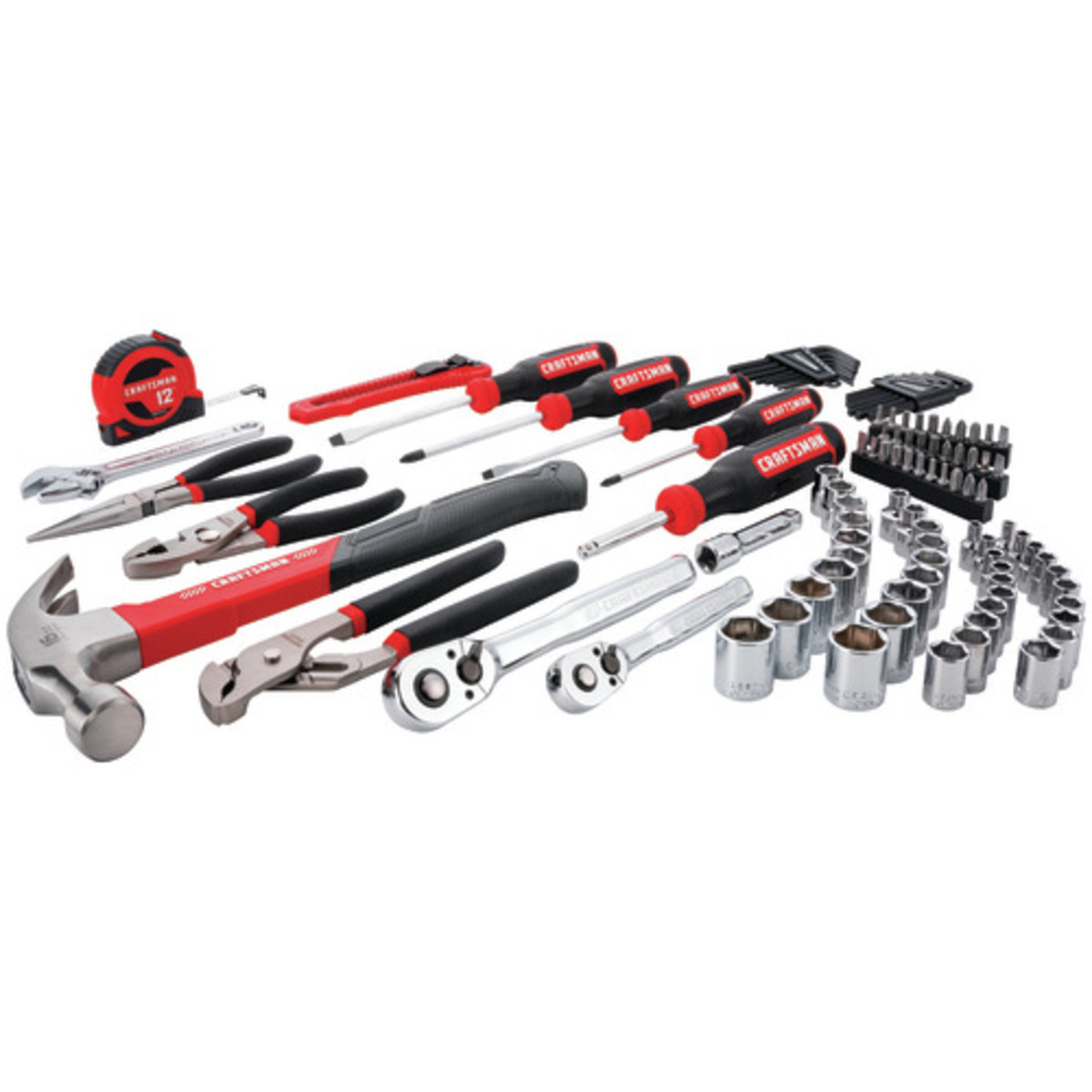
No matter how rugged you try to go, sitting on logs and preparing meals on random surfaces gets old. It is worth packing a table and chairs to lounge out and make yourself at home anywhere. If possible, go with setup pieces that complement one another in size and packability. If you are looking for pieces that take up little packed space, but are sturdy for the long haul, check out the Helinox Table One Hard Top, and Helinox Chair One.
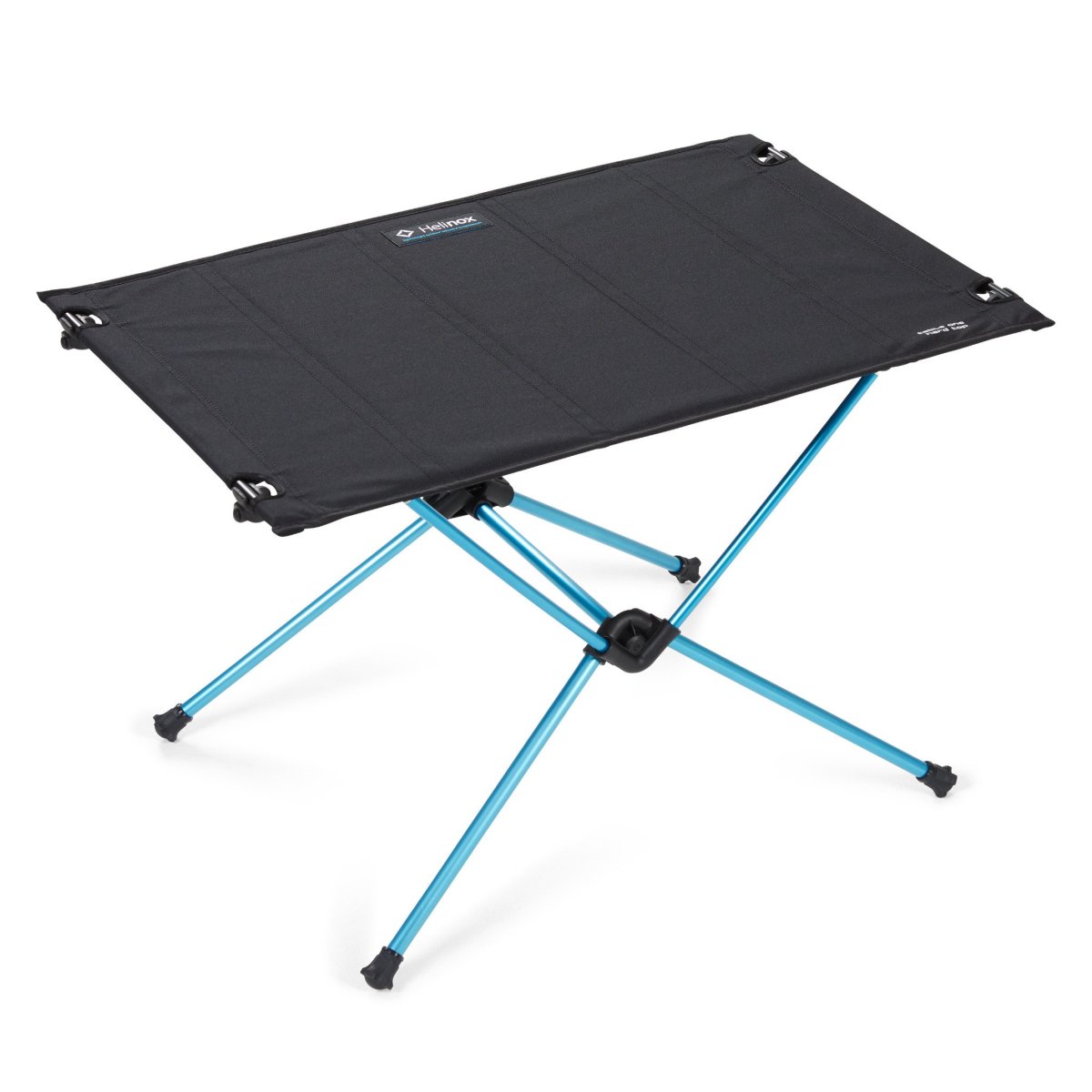
Yep, there’s the rub.
It’s the question above all others with uncertainty on the availability of restrooms while traveling during the COVID-19 era: What to do when nature calls? If you are traveling without the luxury of an RV toilet with a holding tank, then perhaps the most convenient system are Clean Waste’s GO Anywhere Toilet Kits, also more popularly known as WAG (Waste Alleviation and Gelling) Bags. These are puncture-resistant plastic bags containing a gelling agent, deodorizer, and enzymes that break down human waste to the point they are safe to throw in a trash can after use. Pair these bags with Clean Waste’s GO Anywhere Portable Toilet. It sets up in your vehicle or tucks in the woods, and then folds up to the size of a briefcase. Even on their own, the bags deserve a spot on the podium for road trip gear of 2020, just after face mask and hand sanitizer.
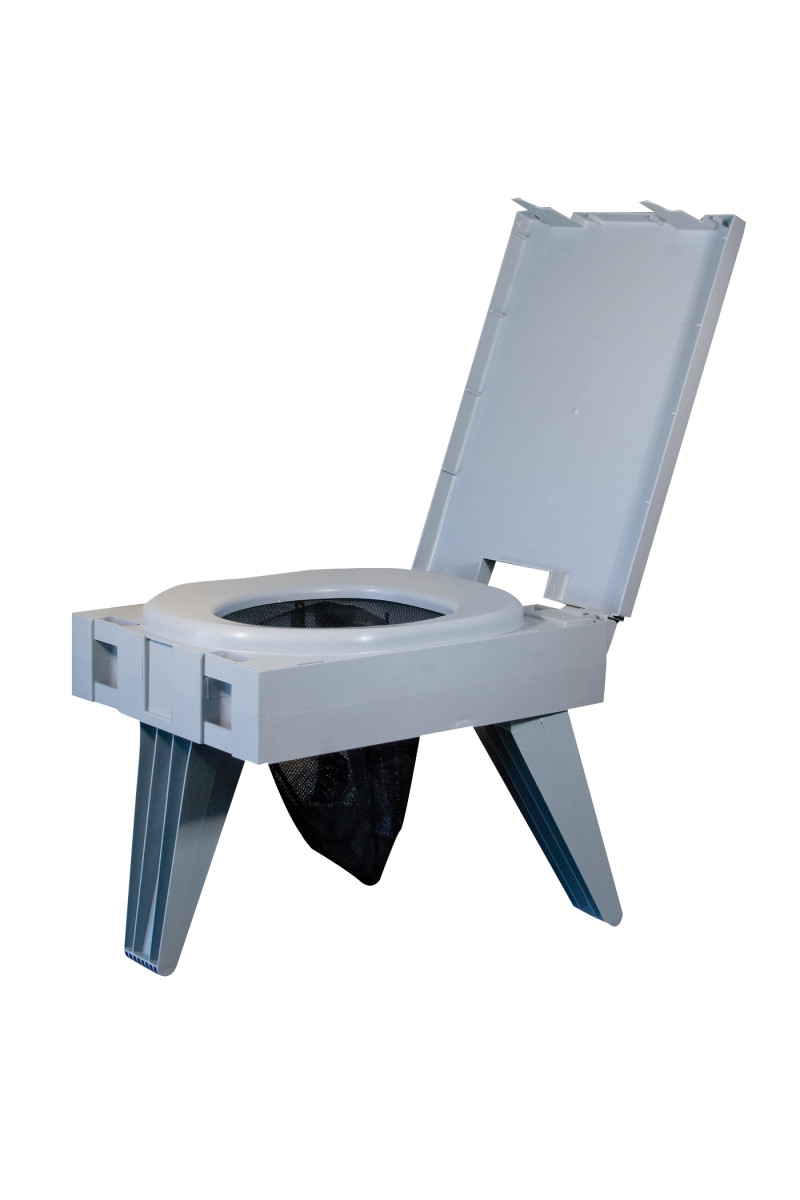
National parks are set aside for a good reason—they’re the most spectacular places in the country—but that means that they’re often overcrowded and teeming with tourists.
There are good reasons why people flock to the best-known parks, but there are also just as many scenic (and less-packed) options right nearby. Here are some alternatives to the most popular national parks in the U.S.
President Trump used a White House briefing on Thursday afternoon to reiterate unfounded concerns about mail-in voting in the forthcoming presidential election.
from Yahoo News - Latest News & Headlines https://ift.tt/339CA3k
via IFTTT
President Trump used a White House press briefing on Tuesday to wonder aloud why he was less liked than Dr. Anthony Fauci, a prominent member of the White House coronavirus task force.
from Yahoo News - Latest News & Headlines https://ift.tt/2P1jAvT
via IFTTT

Fewer than half of people plan to get a coronavirus vaccine in the first year it’s available, and an even smaller group -- fewer than a third -- say they’ll get it in the first 90 days, a new WebMD reader poll finds.
The three of us were on the trip of a lifetime, one we had spent months planning. We aimed to spend two and a half weeks biking and skiing iconic volcanos in the Pacific Northwest, fully self- supported. The plan was to ride 650 miles, linking together seven summits with only human power and lots of snacks.
It was not a normal plan. However, the trip was not happening under normal circumstances—in the midst of a global pandemic and social justice uprising. With intermittent connectivity to the outside world, we lived in a purgatory between something we love to do, and a movement that we wanted to be a part of. By day, we’d lose ourselves in the mountains, managing weather, food, and the ever-present risk of avalanches. At night, we’d turn on our phones, call our parents and friends, and immediately feel lost—more so than we felt in the woods. Recognizing our trip was a selfish and privileged endeavor, we wrestled with the purpose of adventuring almost daily.
In a search for answers, we found one obvious truth: The mountains make us feel alive, maybe more than anywhere else. That simplification of our daily struggles made each climb into a way to reflect and grow, better than any other teacher I know. Charlie, Wyatt, and I grew up scrambling, skiing, and running ridges. This was our way to test our grit and endurance—our way to find perspective. Here’s a look at our journey, from Mount Lassen, in Northern California, to Mount Hood, in Oregon.
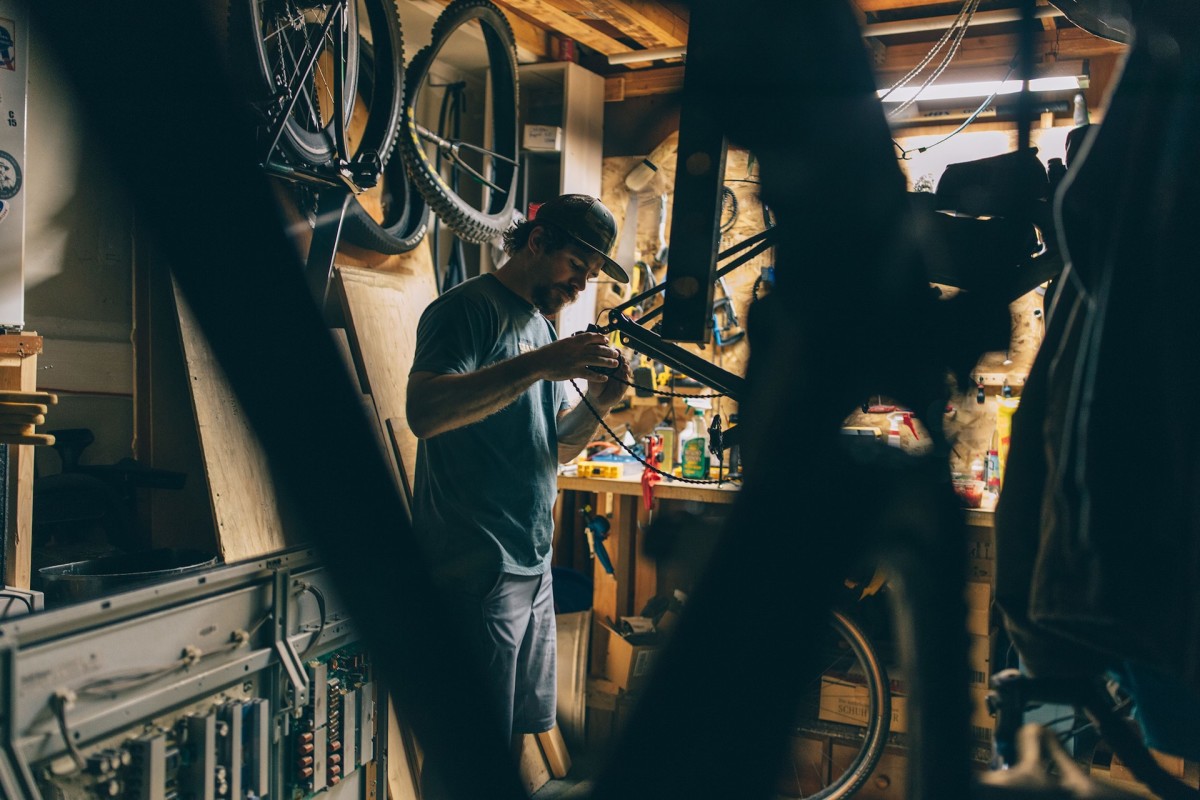
The three of us rendezvoused in Jackson, Wyoming, where Wyatt and Charlie grew up. The last few days before the trip were a blur, riding bikes, packing food, testing gear, and checking weather. The last night before we headed west was spent tinkering in the garage and toasting our naivety of the coming days.
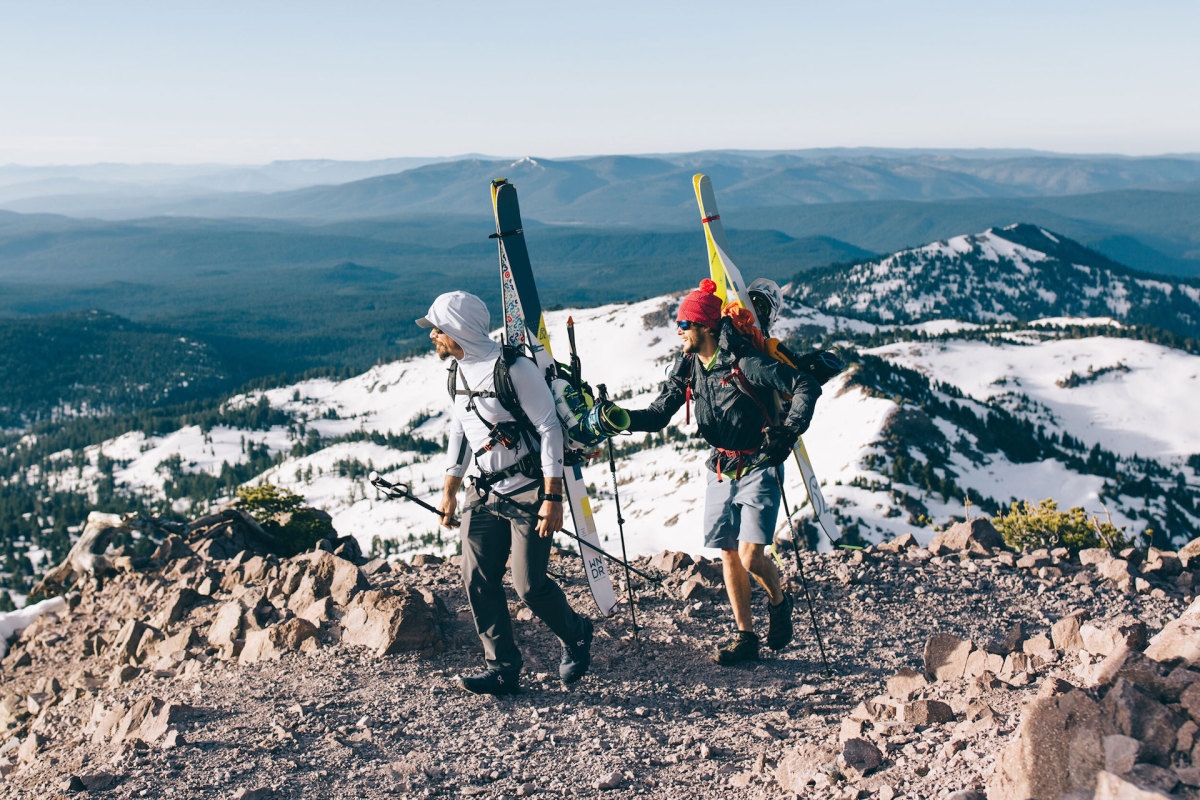
We scaled to the top of Lassen, a lesser known volcano in northern California, in a little over an hour. As our warm-up before Shasta, the highest peak of the trip, this was a great way to figure out gear systems before a big push. With sunny weather and long days in early June, we spent the rest of the day spinning our wheels north.
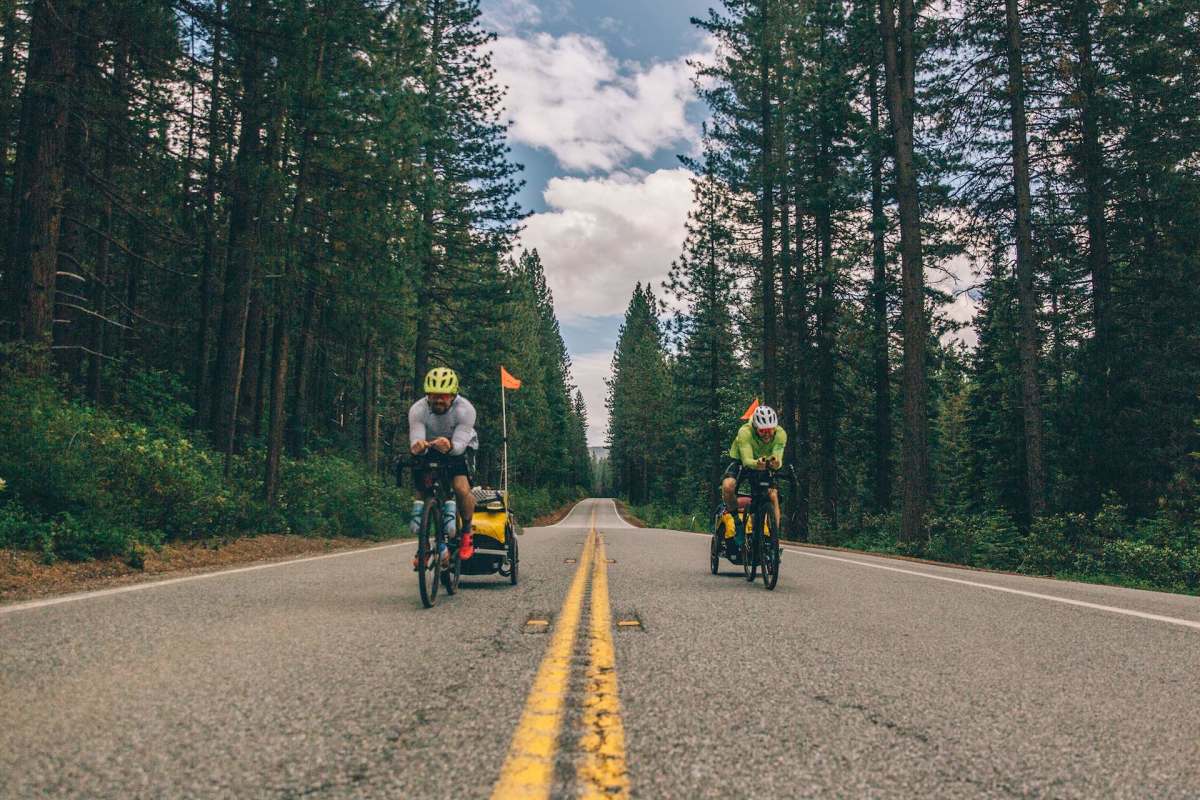
And it didn’t take long to figure out what we were in for. The first hill with more than a couple hundred feet of vert stopped us dead in our tracks. Each trailer weighed around 140 pounds, making climbs feel slow and arduous, even with fresh legs. We fought to stay positive, pedaling empty backroads toward Shasta.
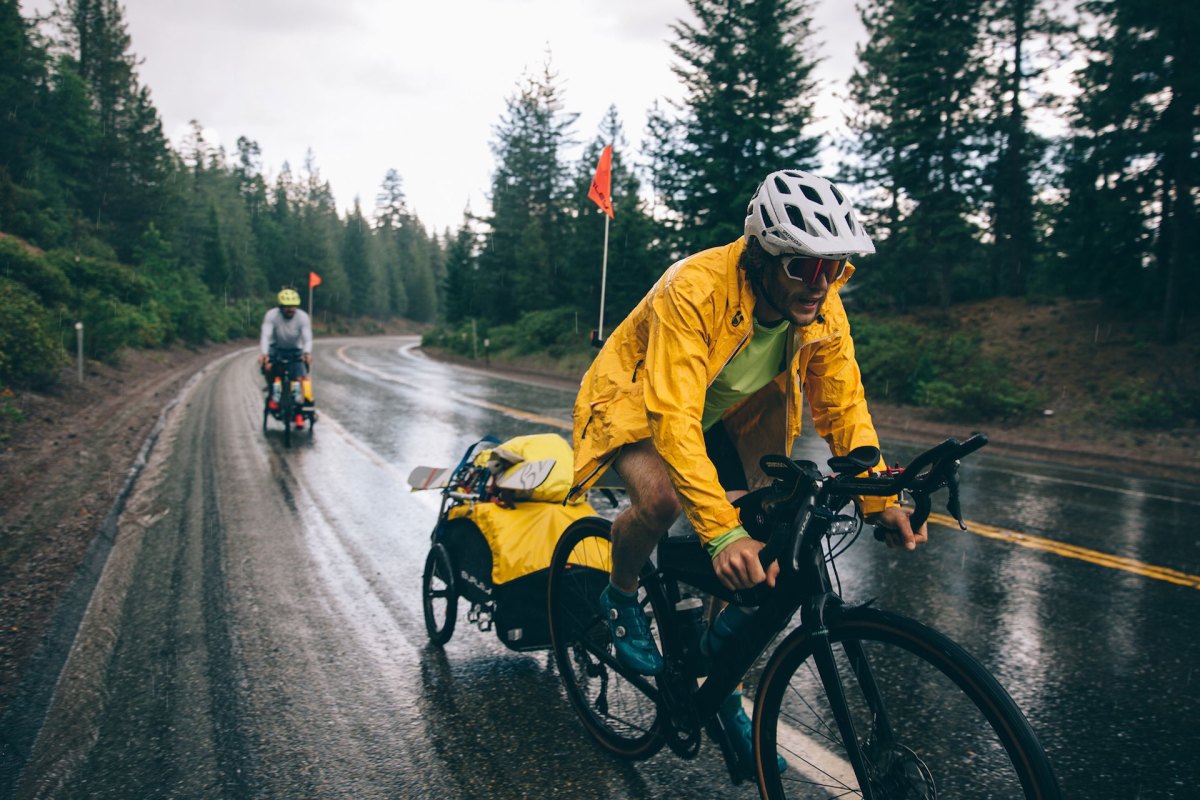

Thirty miles from the trailhead, it started to rain and as we climbed to higher elevations, the rain turned to snow. Cold and tired, we checked the weather to see that this system would sit on the mountain for the next few days. We hunkered down to wait out the storm, not wanting to climb in a whiteout.
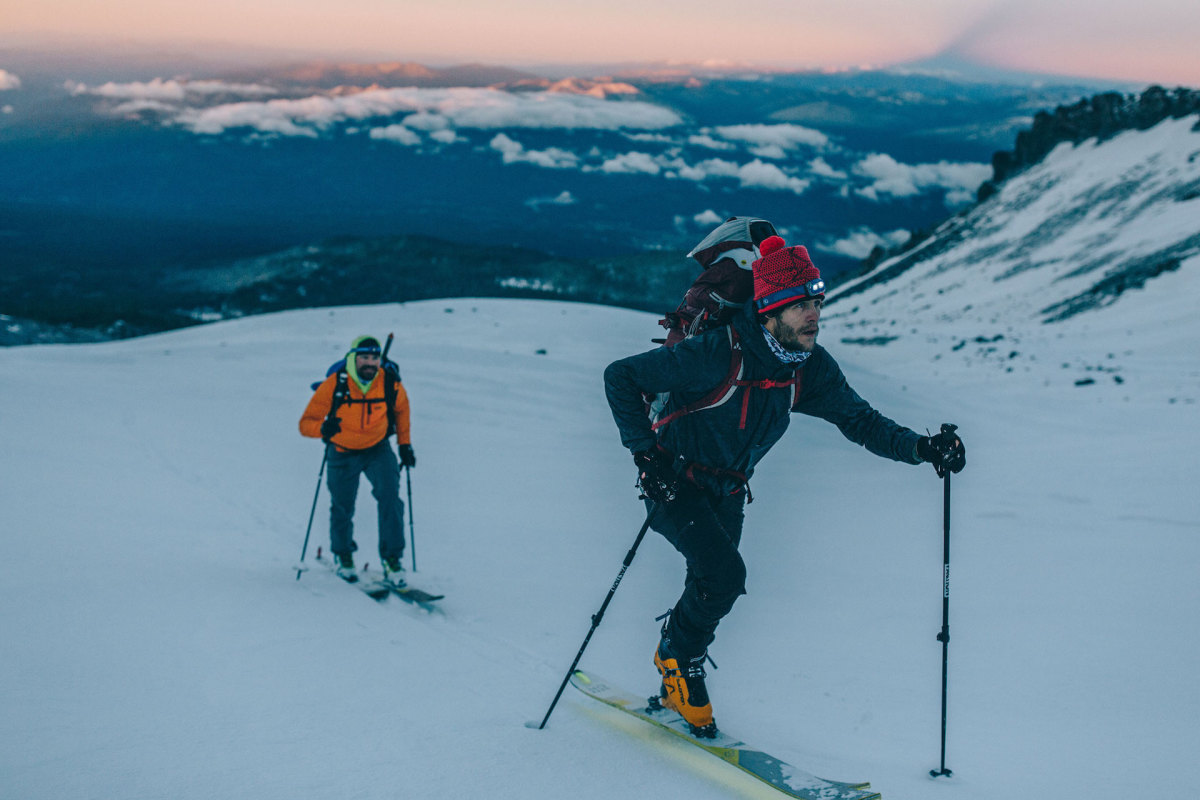
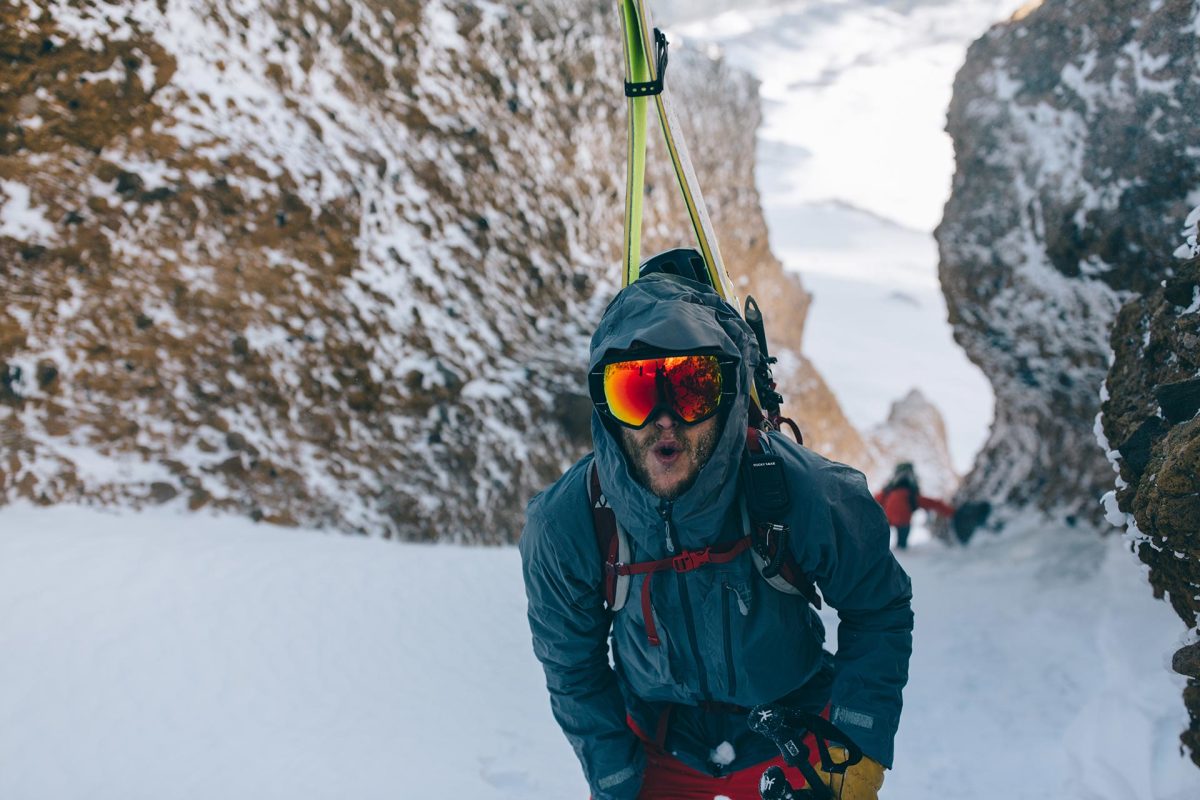
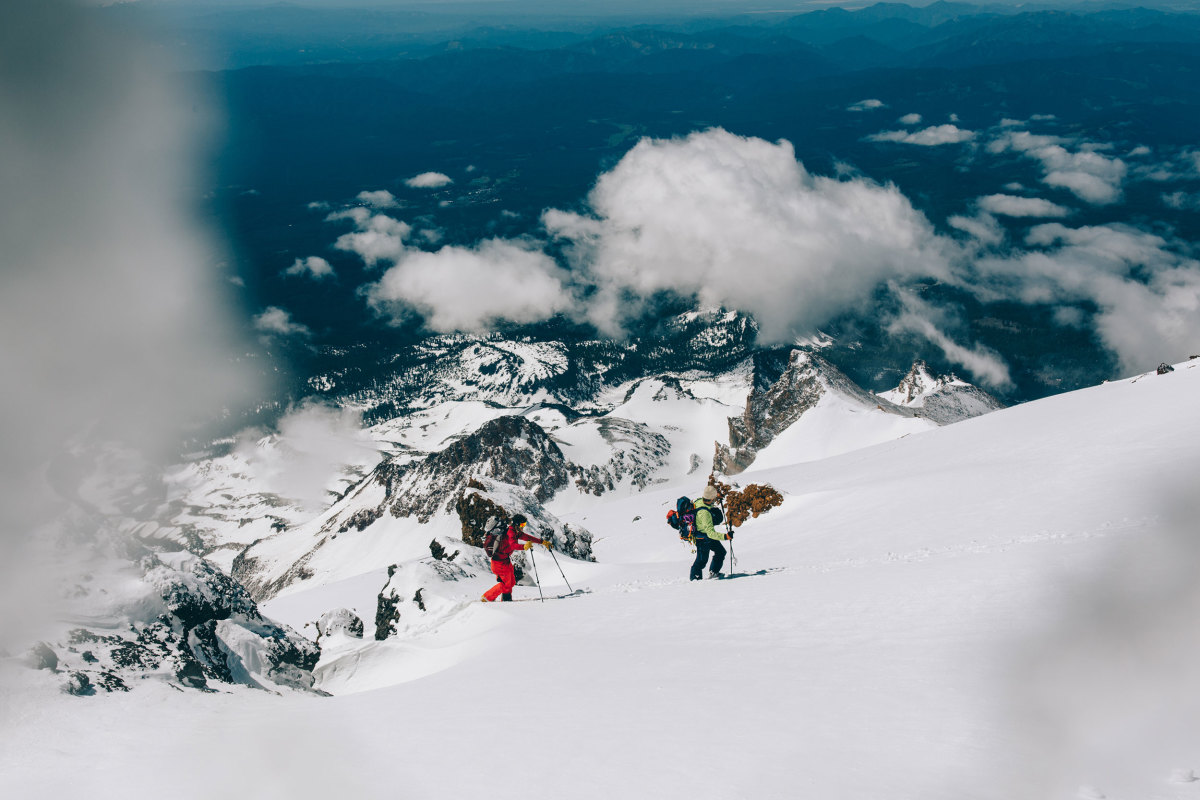
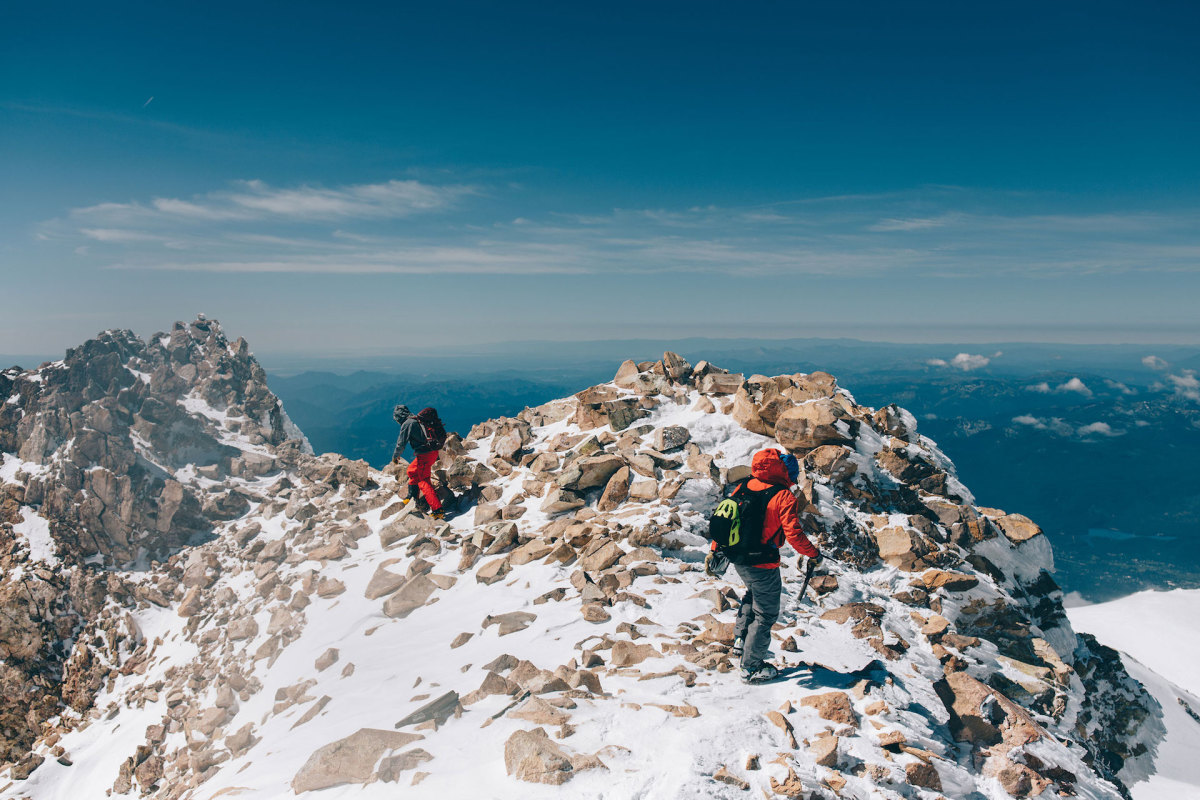
A day and a half later the weather cleared and we made a push for the summit, heading up the standard route, Avalanche Gulch. We found a small gap in the Red Banks and made steady progress up Disappointment Hill, nearly skinning our way to the summit. Surprisingly, we saw only three other climbing parties all day.
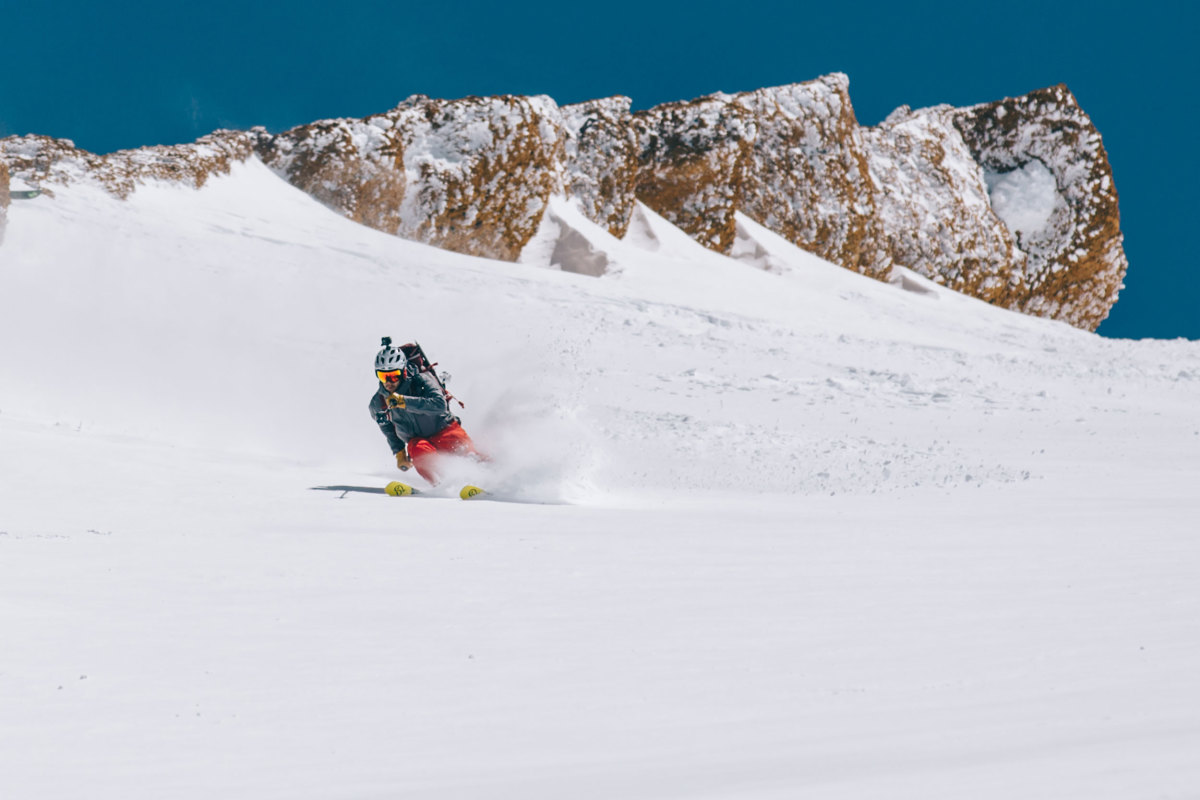
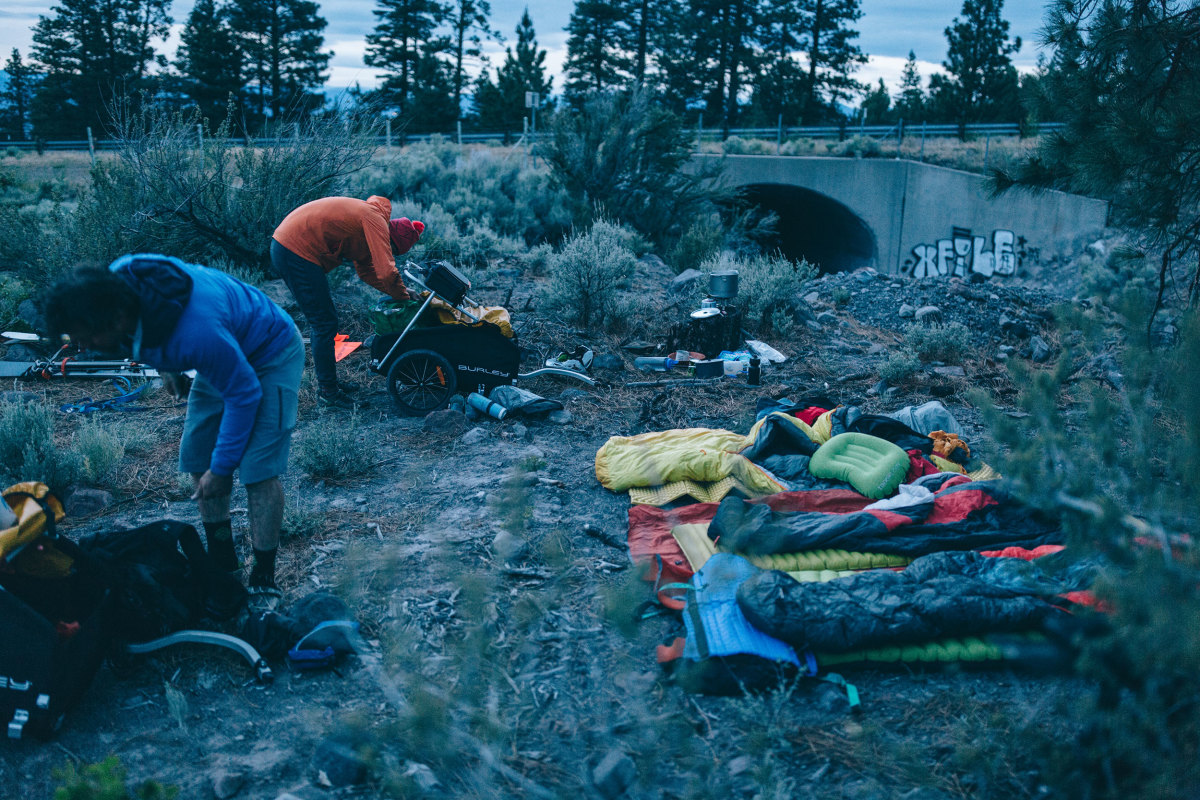
Powder day in June? You bet. The upside of the big storm was knee-deep powder on the top of the peak. Revitalized, we pedaled 30 miles that afternoon, making our way to the Oregon border. Stopping near dark, we set up a camp on the side of the highway, too tired to care about semi traffic.
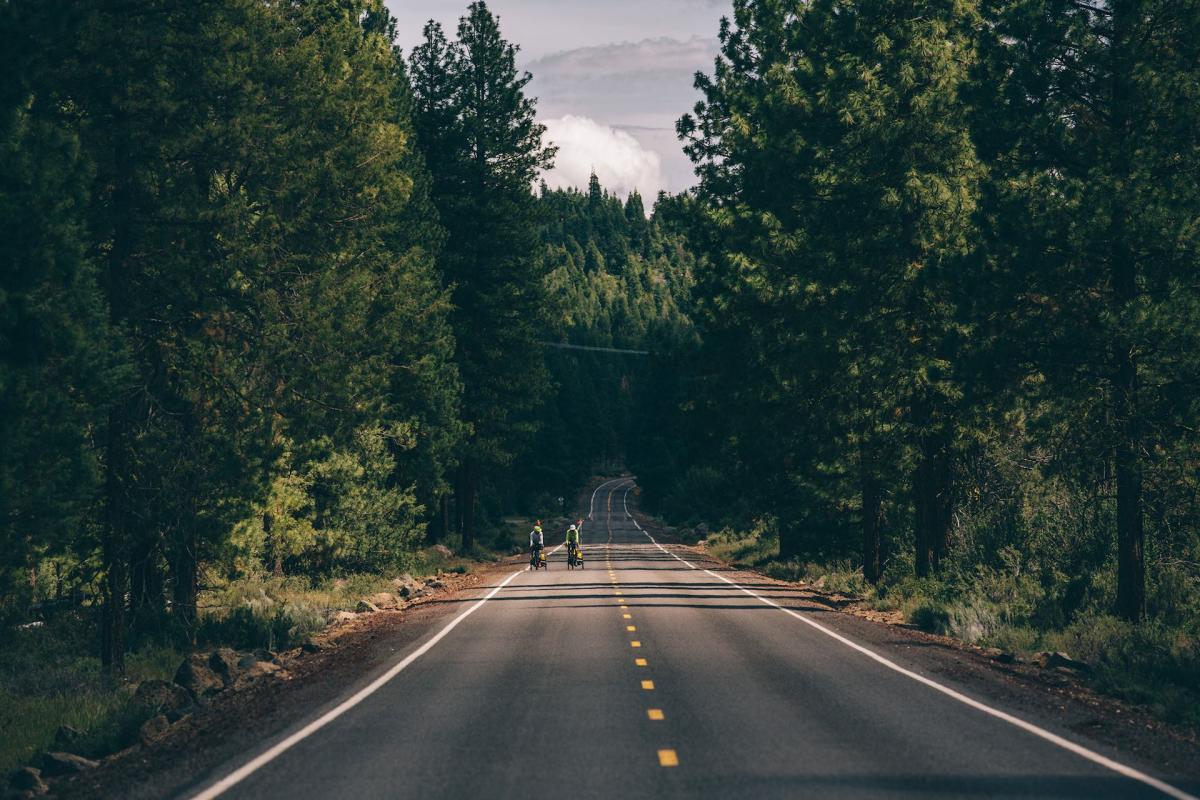
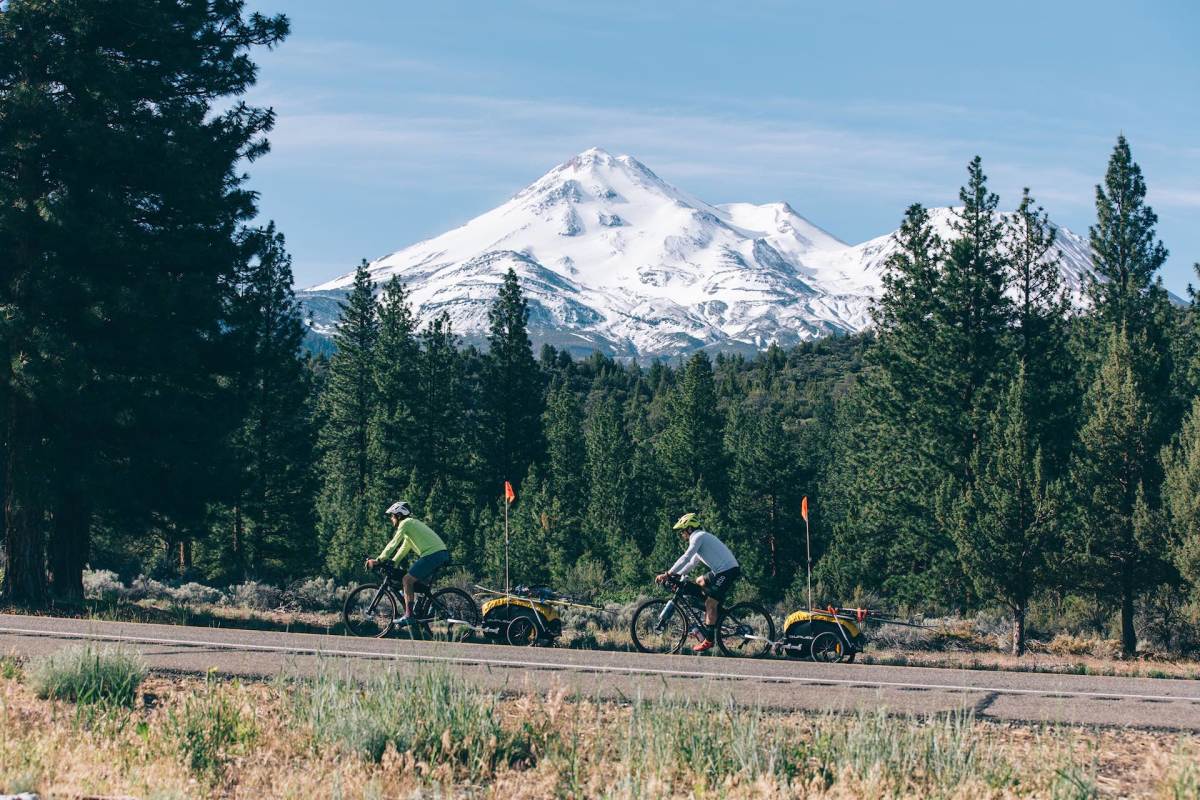
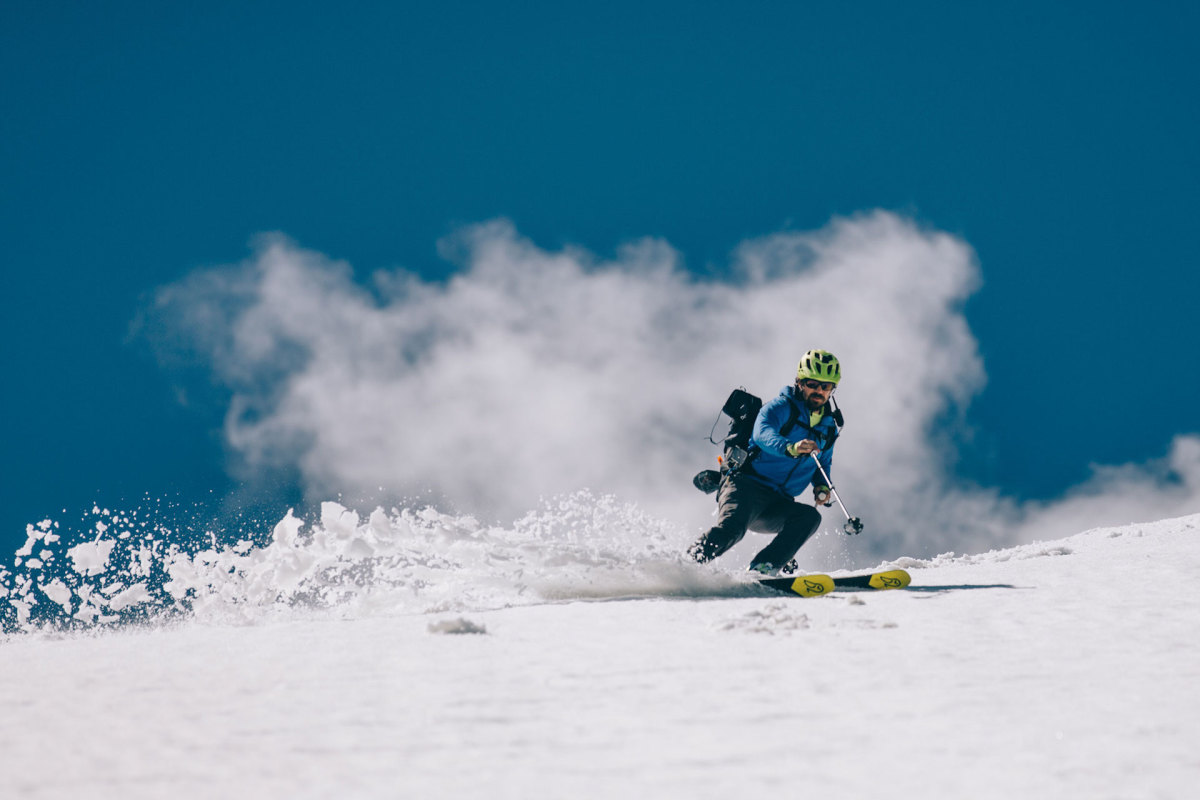
The next day we continued north, biking past Klamath Falls to the foothills of Mount McLoughlin. The next morning we rose early and hiked the long approach up to the snowline with skis strapped to our packs. After summiting, we dropped into the north bowl of the peak, hoping for good turns.
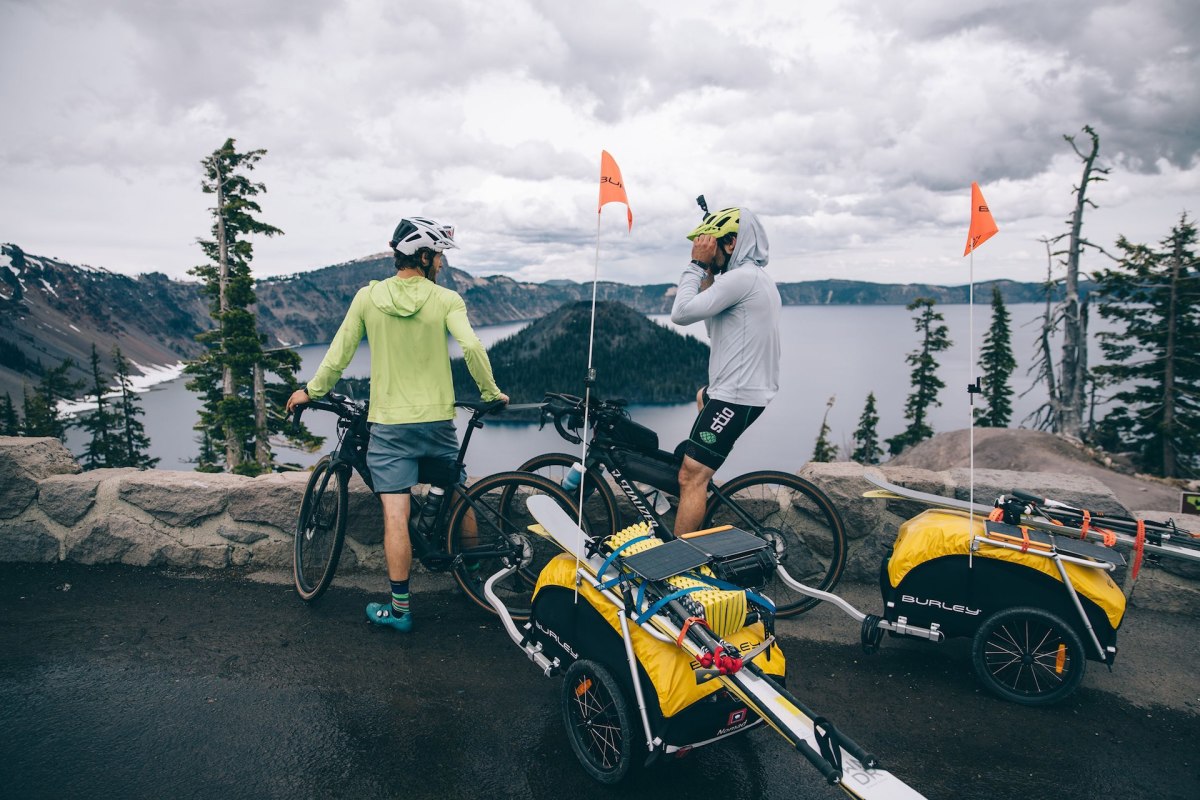
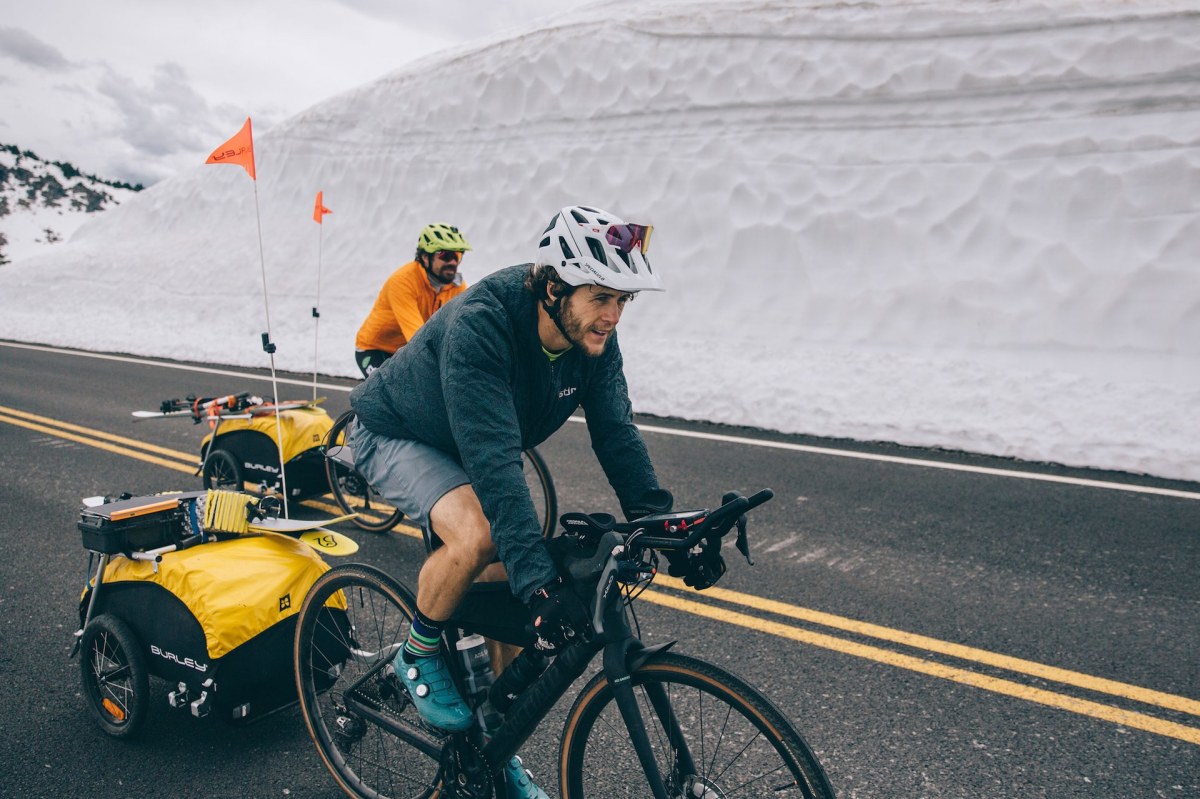
Crater Lake National Park opened the day before we arrived. And despite 4,000 feet of climbing, we opted to take the detour. Biking around the rim of the caldera was a surreal feeling and offered an easy finish the day. After a lake swim, we set up camp and prepared for another climb.
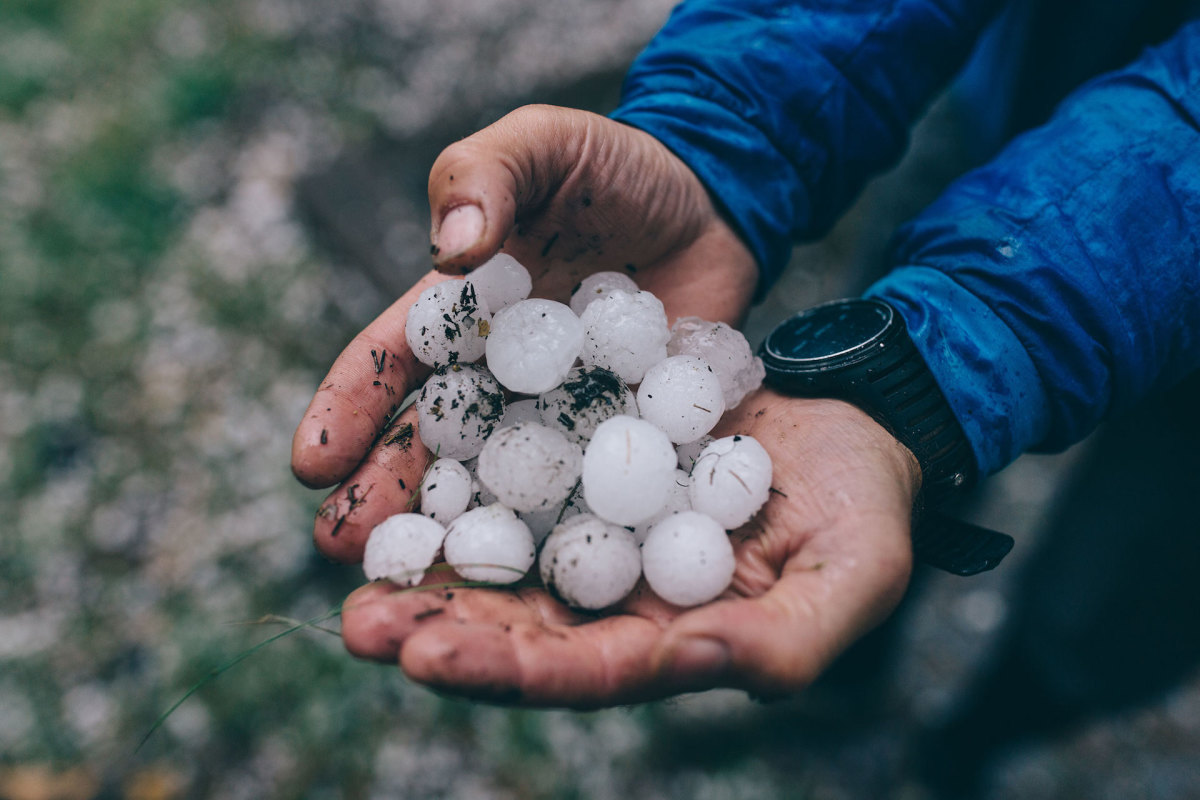
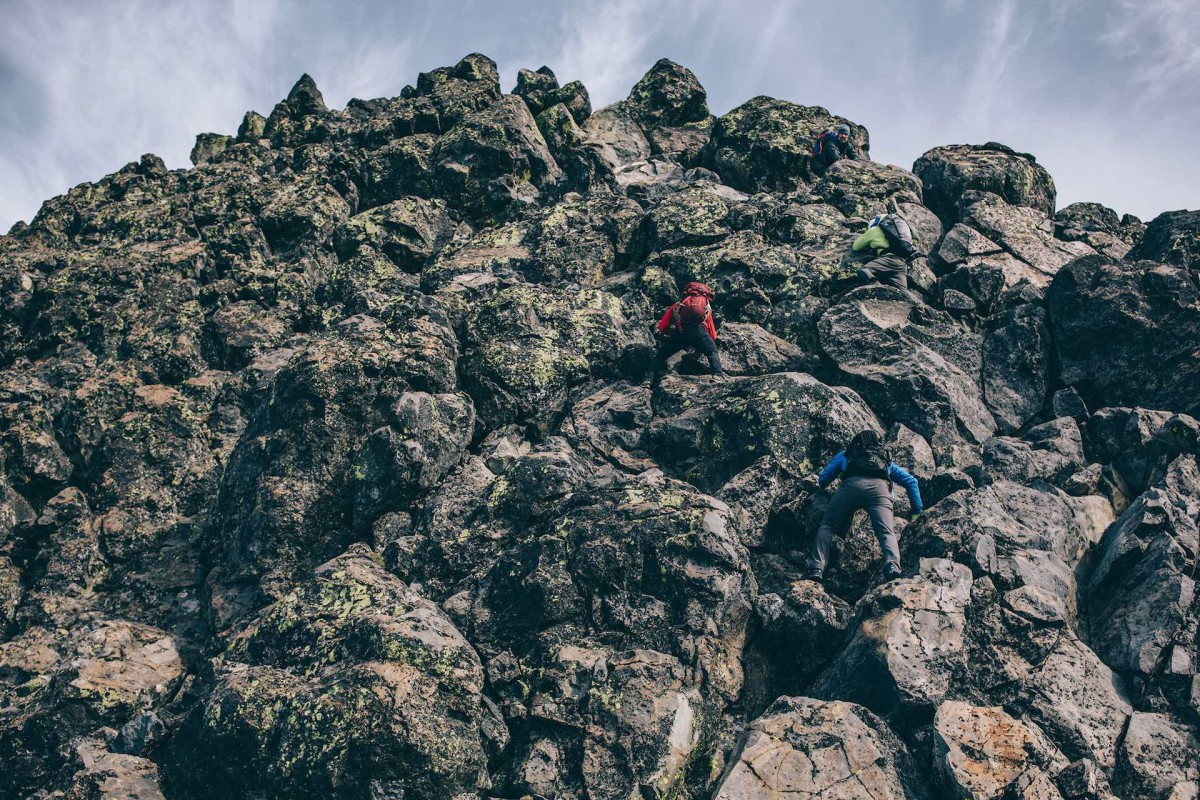
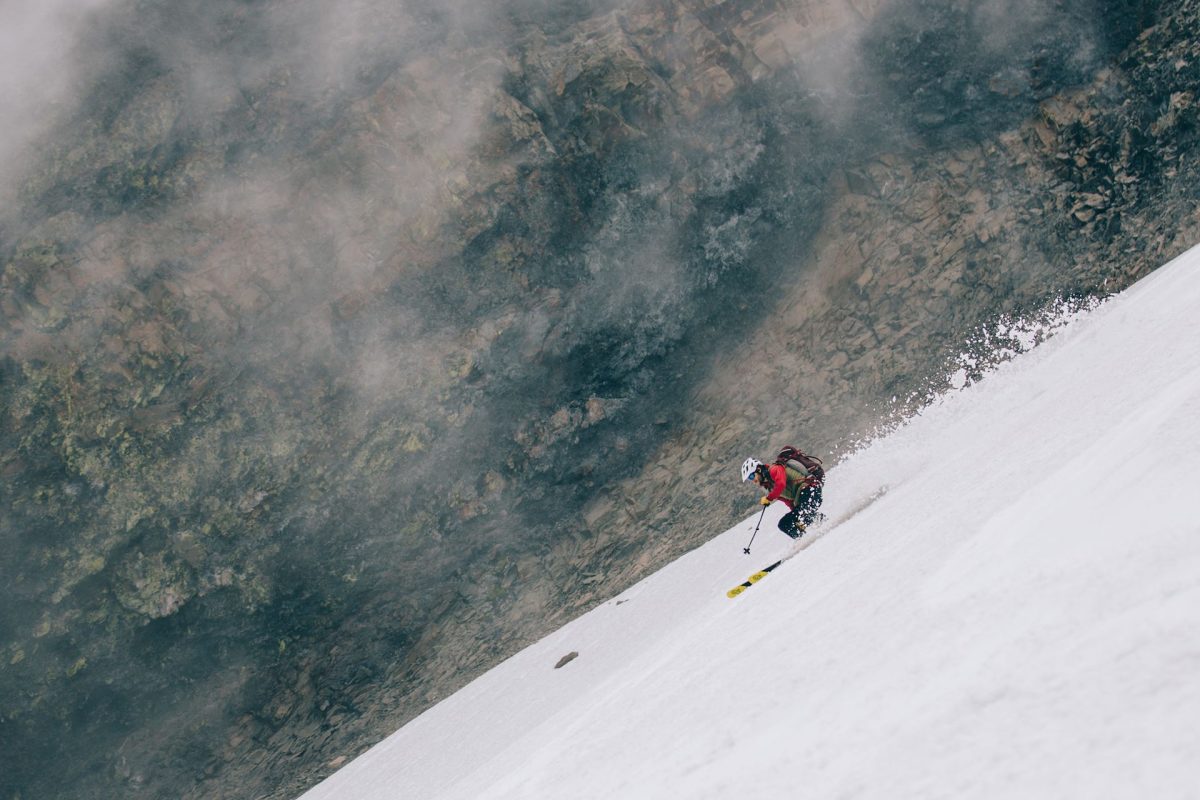
The hail started as we were crawling into the tent and quickly grew to the size of golf balls, forcing us to run for cover. The next morning we hiked up Mount Thielsen, scrambling the last 100 vertical feet without skis. To maximize our turns, we opted to ski a short run, hike around the base, and bootpack up the north face, collecting a couple thousand feet of perfect corn.
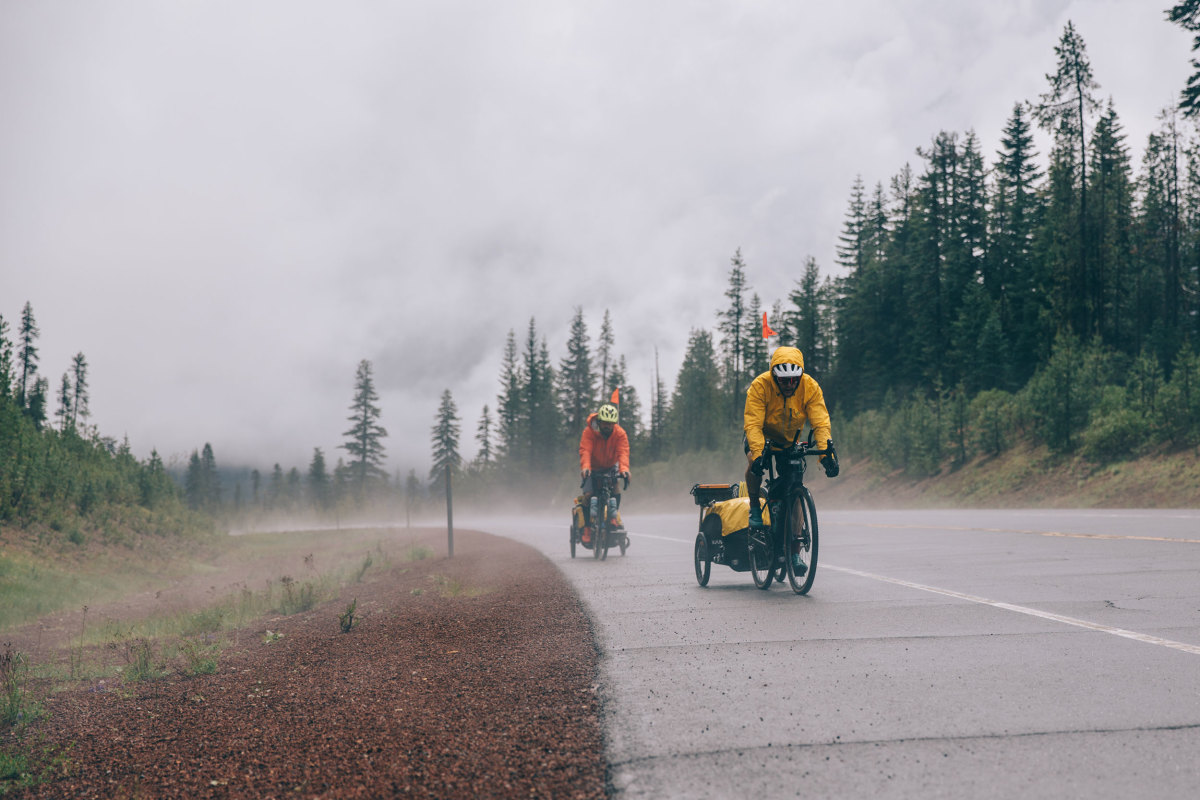
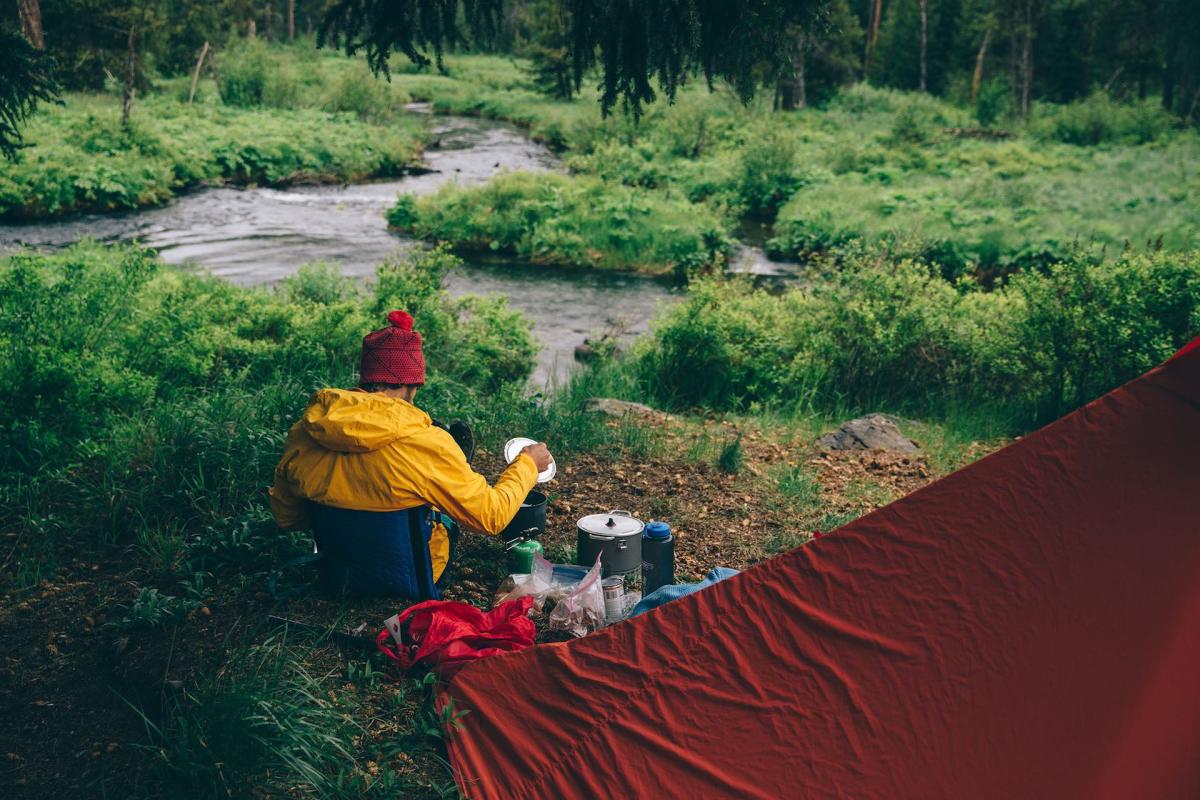
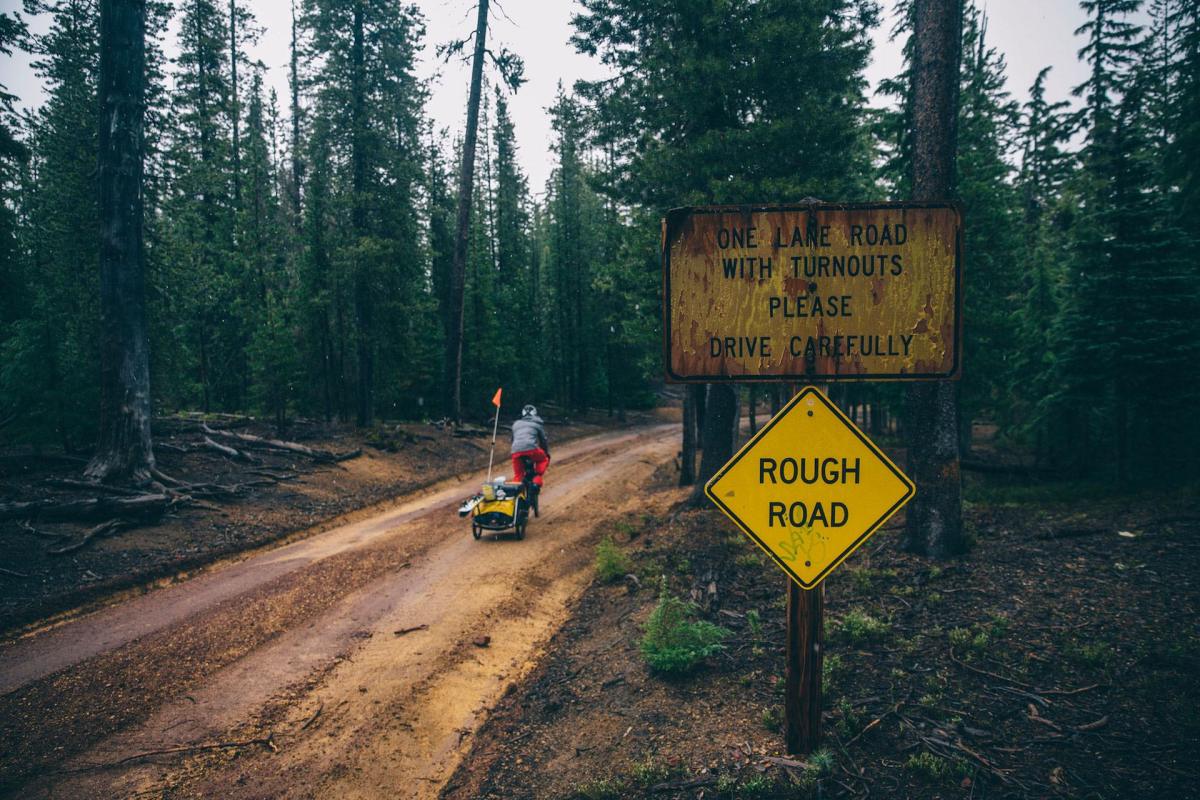
Back on the bikes that afternoon, clouds moved in. As we were learning, rain was the ongoing theme of the trip. We pedaled until stumbling into a beautiful campsite on the Umpqua River. The next morning we biked up Windigo Pass, a long and steep dirt road. At the top, it was snowing and I had lost feeling in my toes.
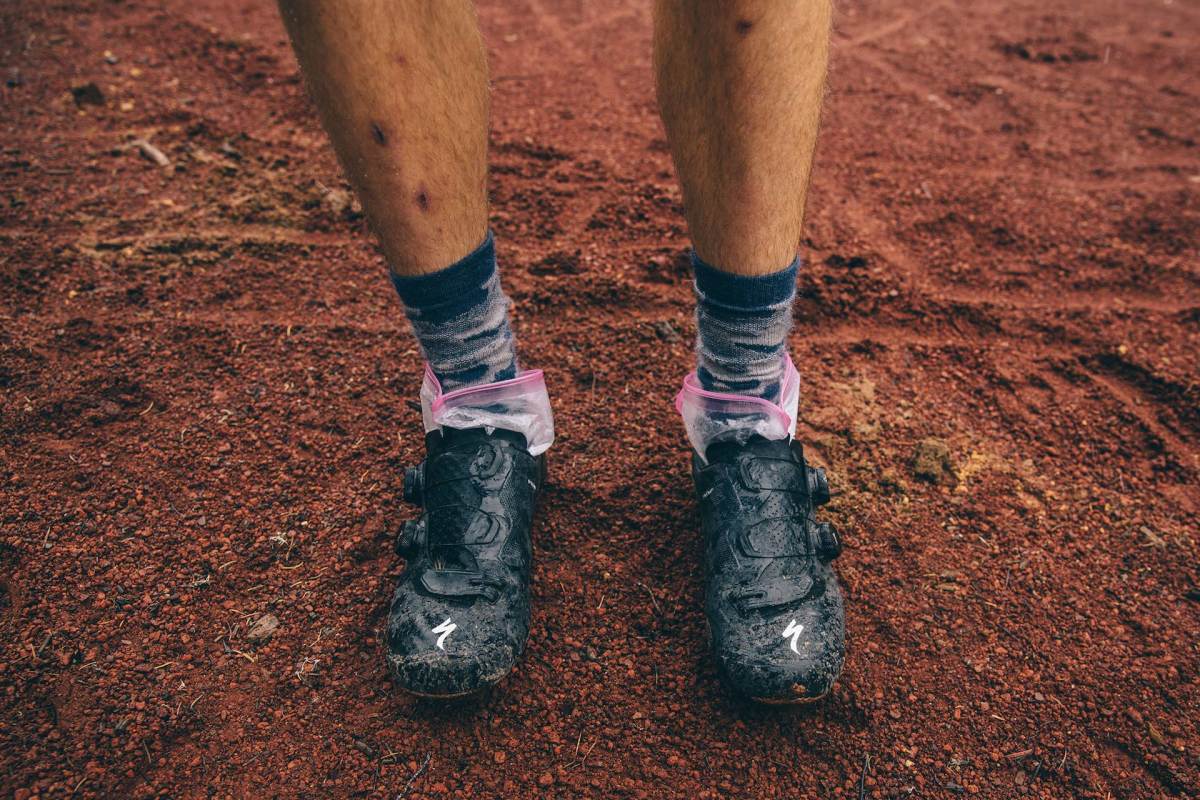
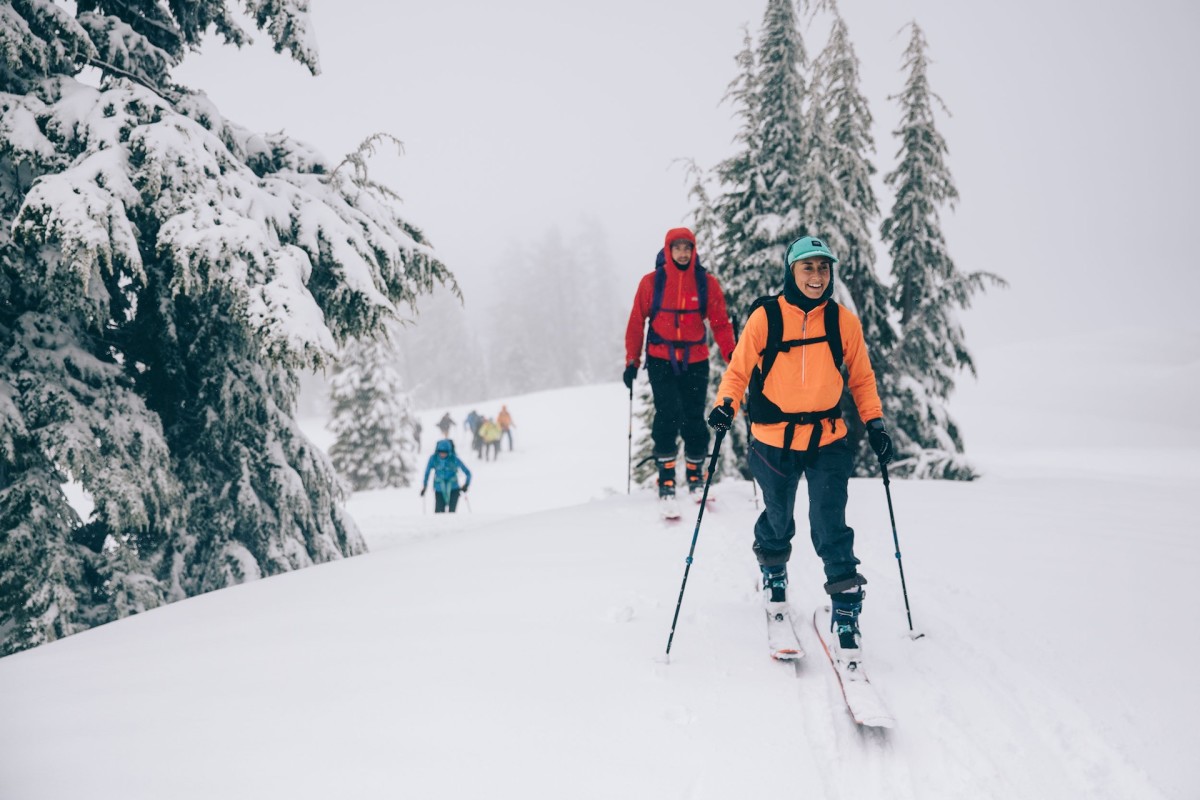
Using an old Minnesota trick, we put plastic bags in our shoes to trap moisture and heat, which soon upped morale. The following day a few friends joined us on South Sister, before whiteout conditions forced us to turn around a thousand feet below the summit. After a stop in Bend to resupply food, we continued north toward Jefferson.
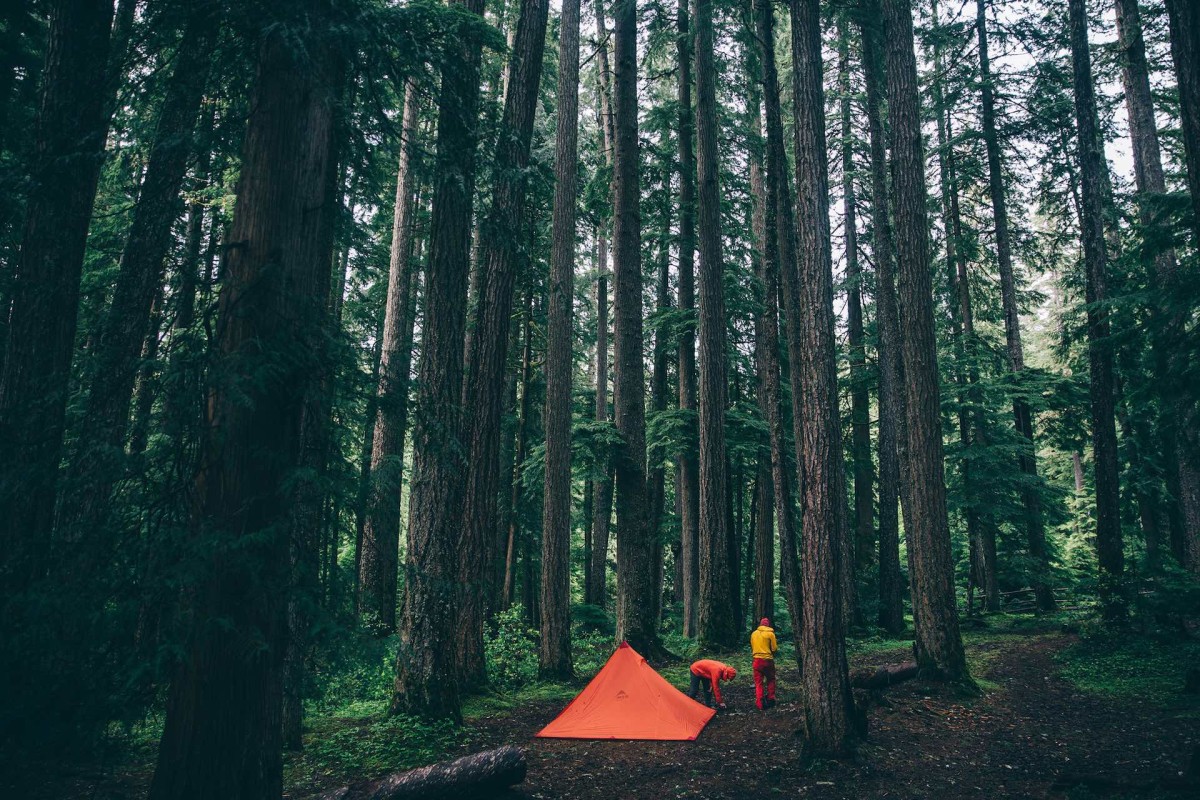
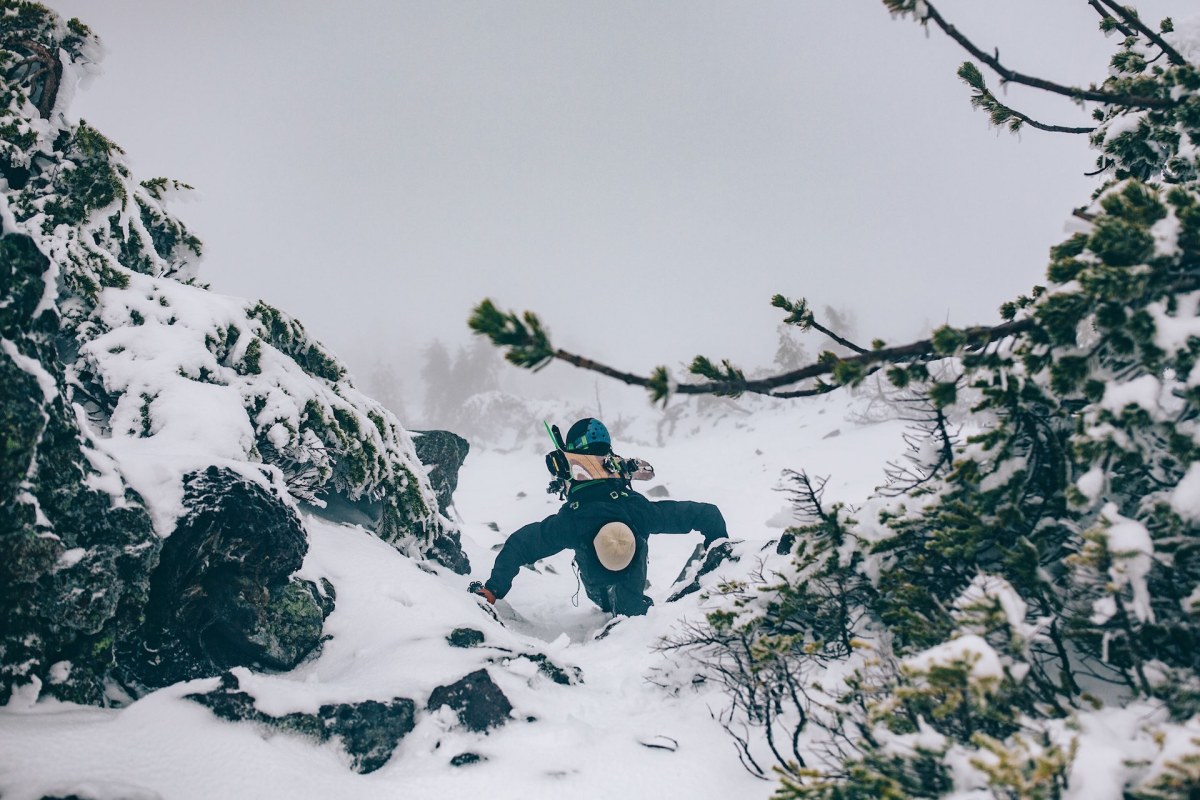
Yet another wet storm came in that evening, forcing us to wait a day before climbing Jefferson, one of the more elusive peaks in the area. The climb started off cold, bushwhacking through a mile of dense brush. Eventually we broke through the cloud inversion and skinned up to the base of the summit pinnacle, opting to stay off the icy and exposed ridge to the top.

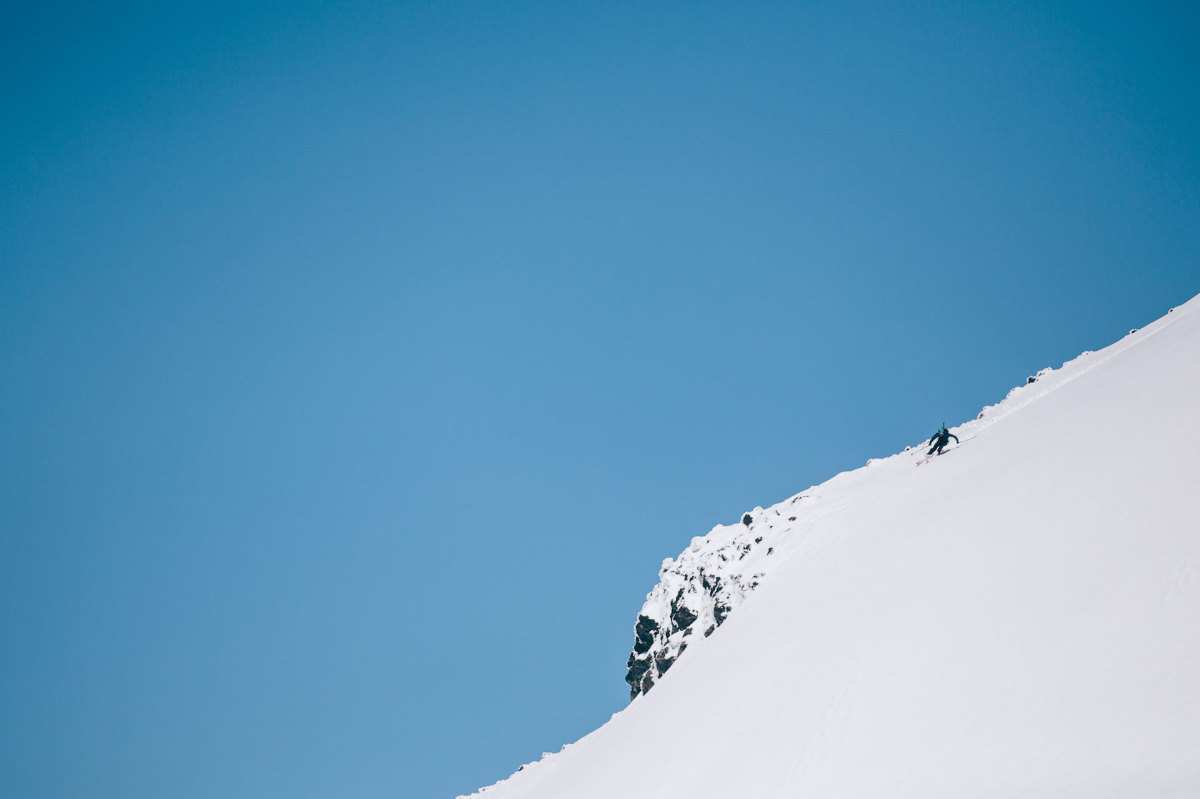
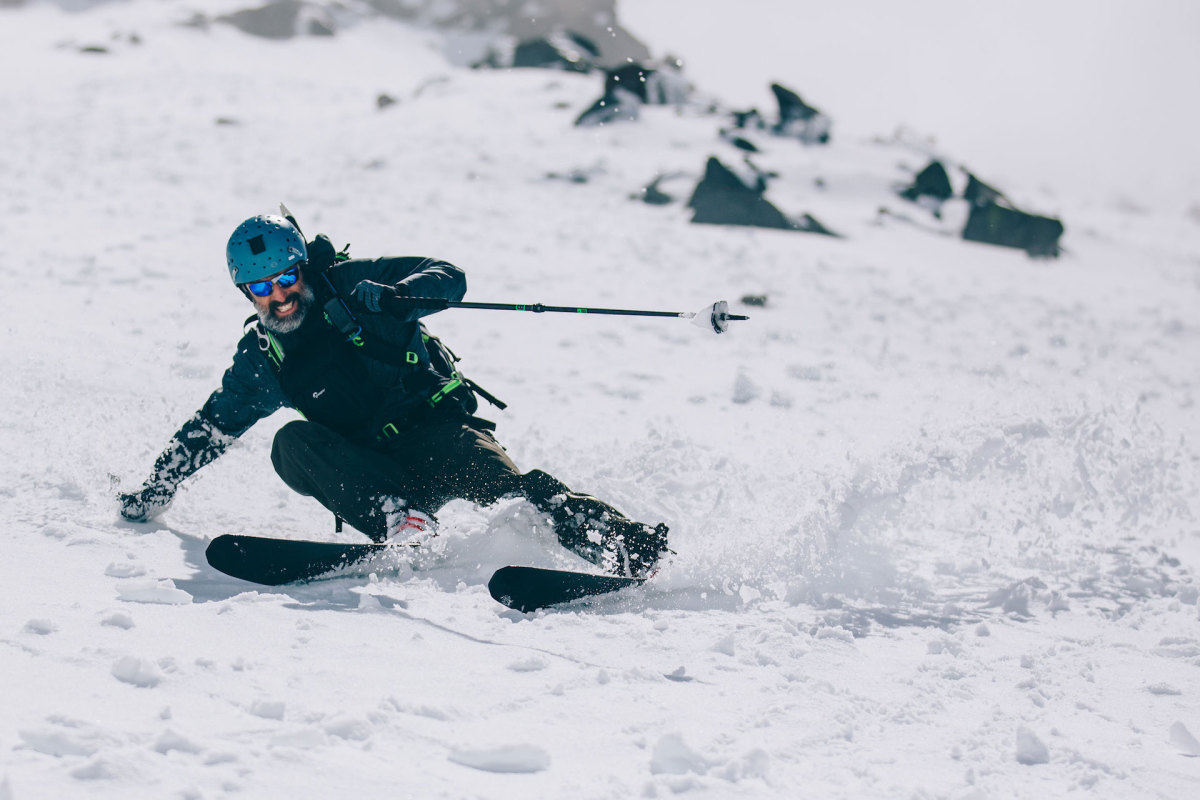
As a reward for the hardest climb of the trip, we found perfect backcountry corduroy for most of the ski down. Even after a 12-hour day on the mountain, we got back on the bikes and pedaled until dinnertime. Lucky to find a great camp spot by the river, we toasted the end of the rain—for now.
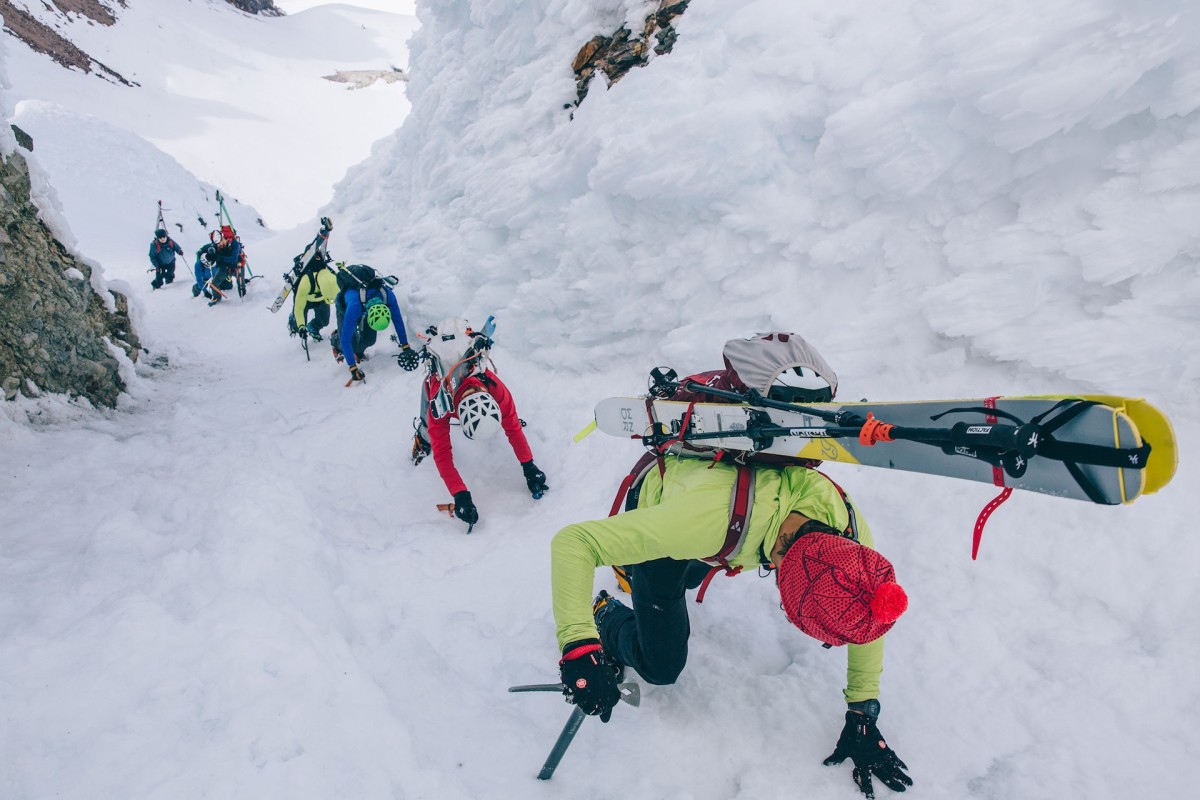
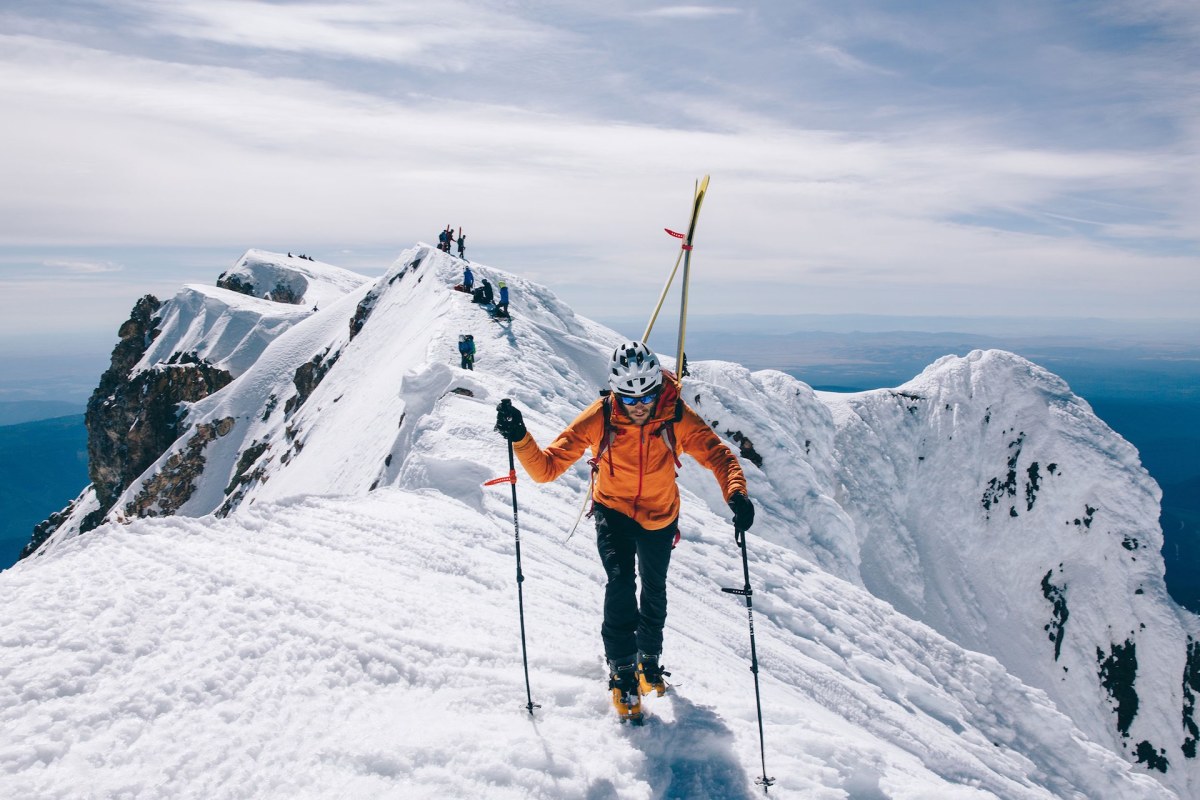
The ride to Mount Hood was a poetic end to the trip. Almost 9,000 feet of climbing on empty roads made for a memorable day of suffering together. We took out the jambox and rode shoulder to shoulder, singing ’90s hits. The next morning we started around dawn, happily skinning from the parking lot. Skiing the Old Chute off the summit ridge, I remember thinking how lucky we were.
The trip wasn’t what I expected, but that’s the purpose of adventure. To be dealt adversity and to handle it as best you can. This lesson applies to much more than bike-to-ski adventures, too. It wasn’t lost on me that I’ll need this patience and perspective as I started to get involved with issues larger than myself.
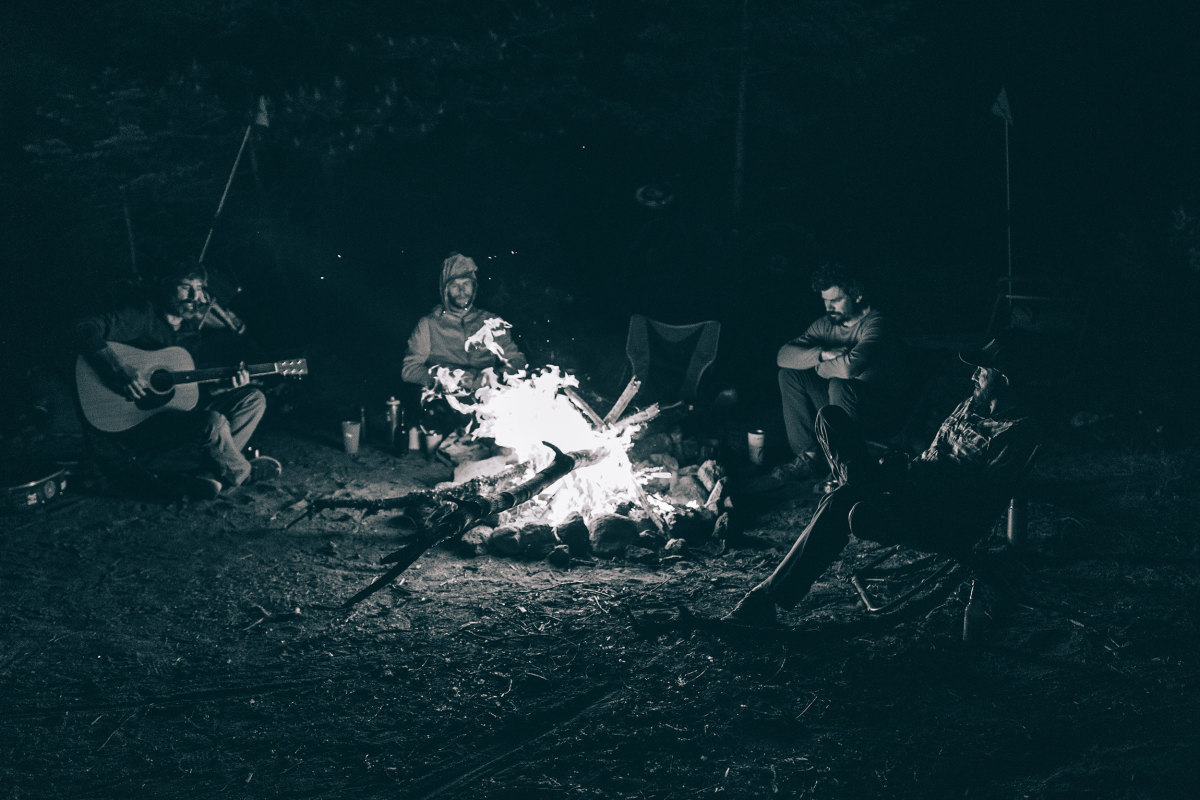
— See more recent dispatches from Cochrane, including a look at life on an Alaskan crab boat, coverage of the Baja 1000, and the tale of an emergency canyon evacuation deep in the Mexican jungle.